Plotter Notebook System
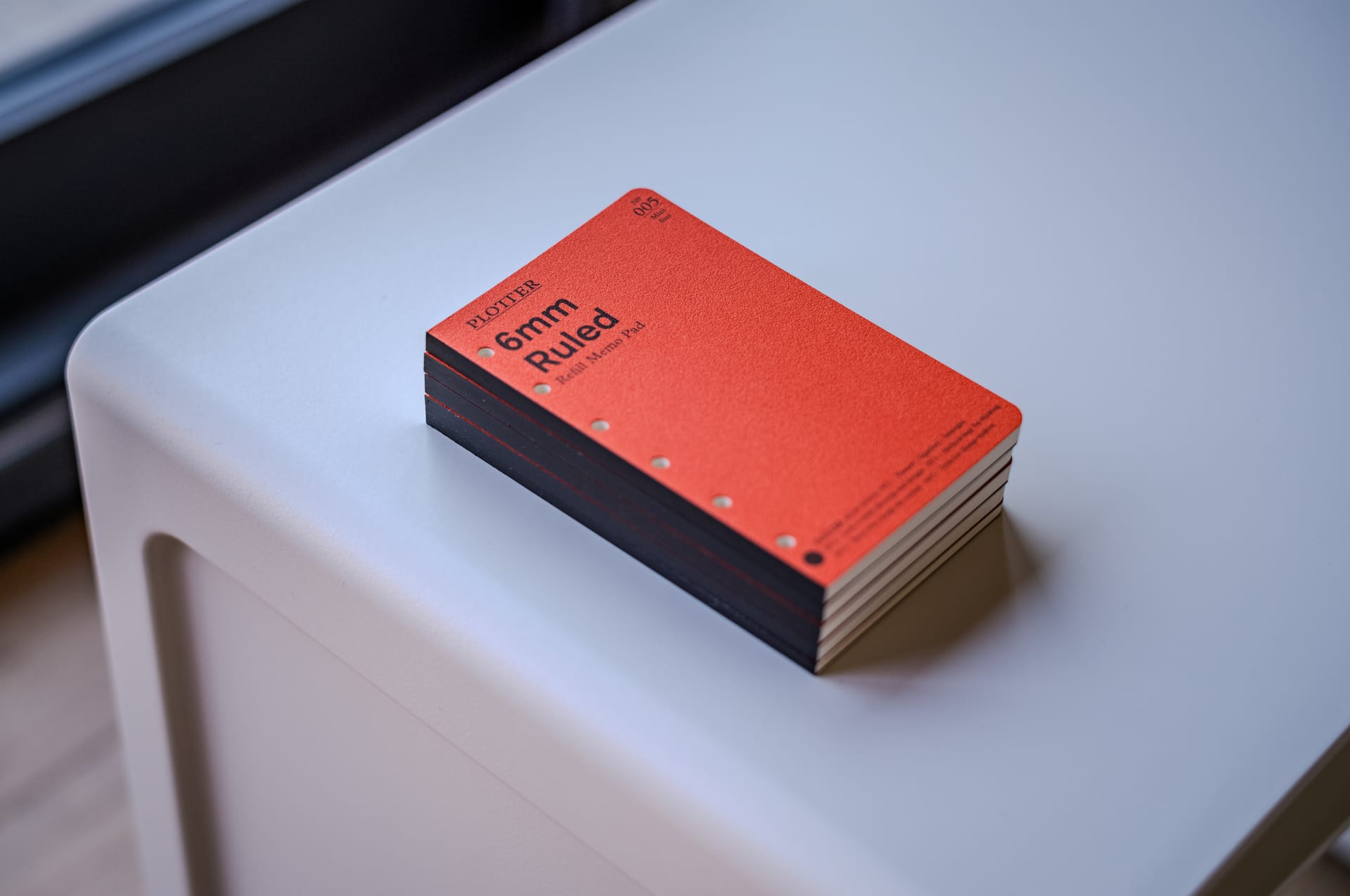
Taking notes, in my opinion, is the best thing one can do for themselves. Writing is a form of thinking, and writing manually, in an analog manner, elevates the process. It has a positive impact on your well-being. It’s akin to working out for hours and then returning home to relax. You know your body hurts, but it feels good. Writing has that same feeling for me.
Over the years, I've been using several notebooks, from several brands. These were small Field Notes distributed around the house, car, and several Moleskine Notebooks for Journalling and Notes (nit: I'm not very happy about Moleskine for a long time and over the years I've replaced them with other brands, but that's another story).
However, I discovered that I don’t have a system or a plan on how I take notes. It's chaotic.
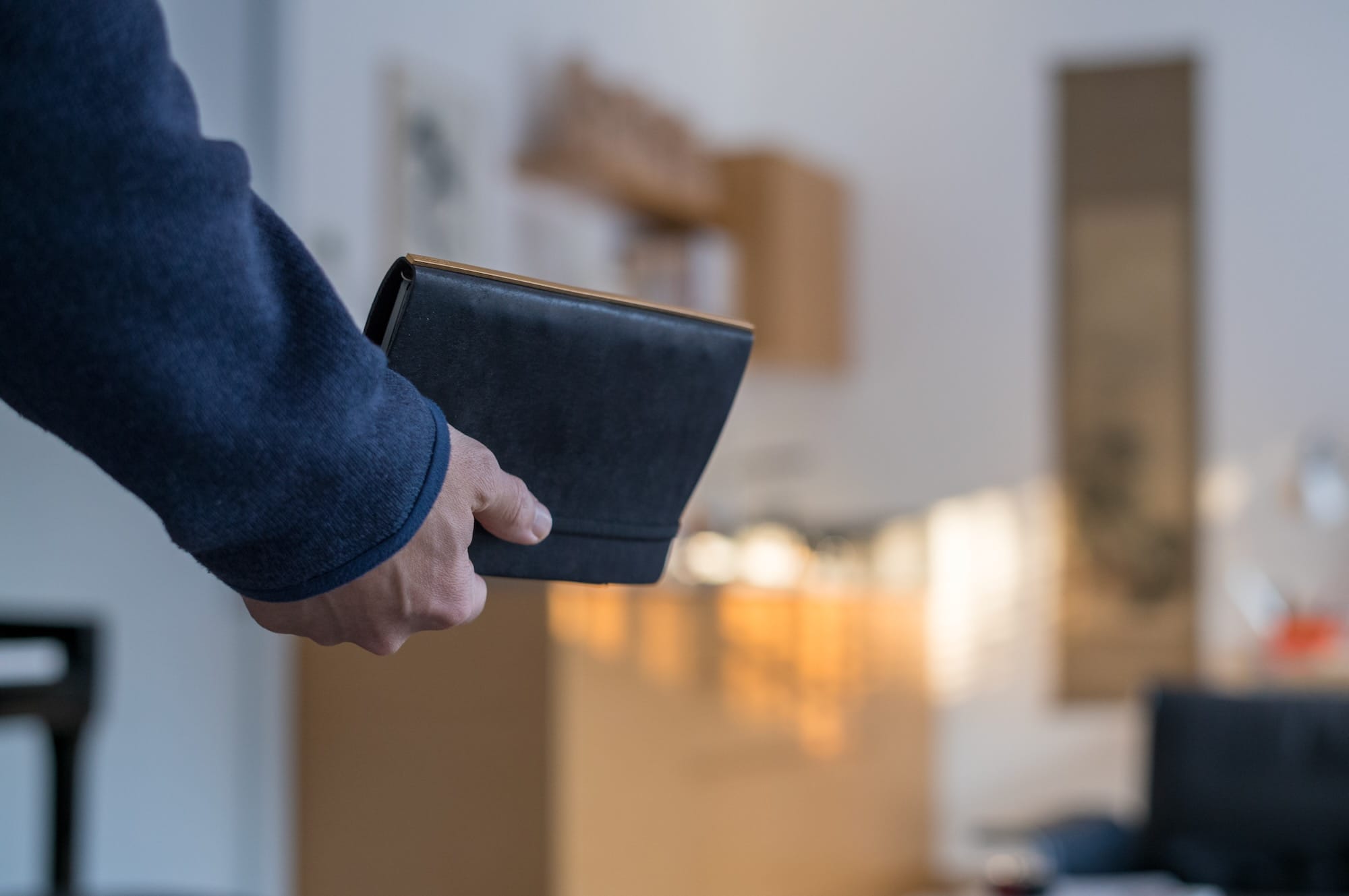
Readers of this website might be confused because all my habits are built around systematic work and discipline. Unfortunately, taking notes is an exception. I’m a heavy user of Apple Notes, and I have around 400-500 digital notes. Relying solely on Apple Notes doesn’t work for me though.
I get lost, and I’ve discovered that I don’t prefer using digital tools for organizing my life (nit: this is mainly due how frictions in various parts of our life shape our habits, I have a draft post about this that I plan to publish at some point). Of course, essential tools like calendars and a shared grocery list with my wife are crucial, but everything else just doesn’t work for me.
I wanted to go back to writing analogy. However I also wanted something that is highly modular and supports a few things, most important:
- To Do lists
- Weekly/Monthly Calendar
- Notes for one-off projects
- Like the design of my Block Lamp
- Planning upcoming family trips
- Goals
- Habit Tracker
- Commonplace book (a place to write inspiring quotes)
- General Notes/Scribbles
- Journalling
- Sketching
Some of the bullet points may overlap, but each has its own purpose. Using a Moleskine notebook for planning doesn’t work because it’s not a planner. Alternatively, I could purchase a separate notebook for planning, journaling, and projects, which would result in multiple notebooks. Therefore, I need a flexible and modular solution.
Enter: Plotter Notebook System
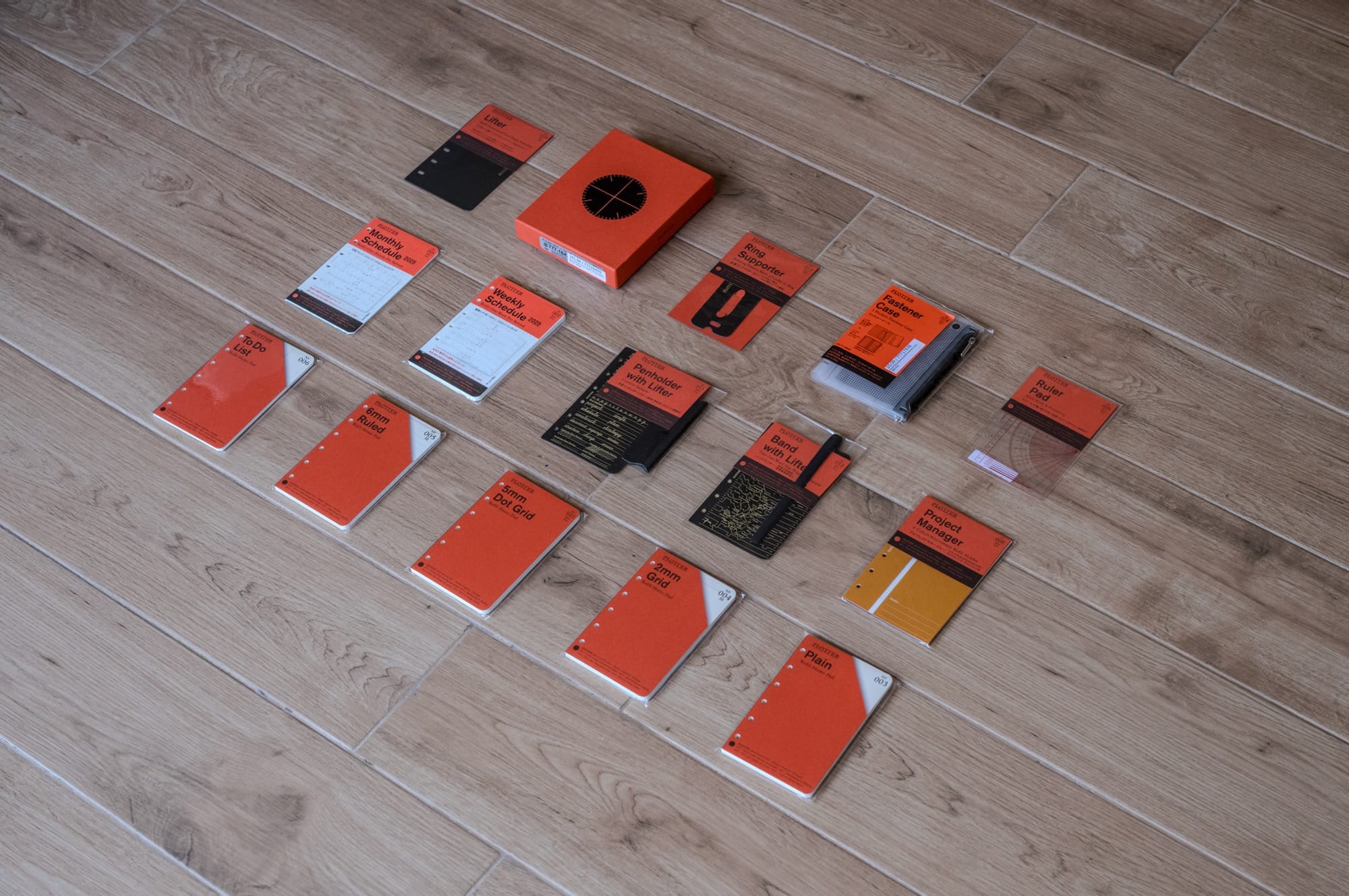
There is a lot to cover. Let’s dive into it. (p.s.: This is not an Ad, I purchased all my notebooks myself, and Plotter didn't sponsor me. I like what they do, though.)
What is Plotter?
Plotter is a binder system that uses rings to hold refills. It’s not a novel concept; ring binders have been around for a long time, with brands like Filofax being popular. However, they tend to be bulky and primarily designed for planning and calendaring, rather than creative tasks like note-taking, journaling, or sketching. These kind of systems are also called "System Techo" and extremely popular in Japan:
The word “techo” derives from the Japanese word “techo (手帳)” which means a planner or notebook system at your hand that helps you stay organized. A system techo is a method of organizing various types of refills and paper types in a ring-binder system. The flexibility to remove and replenish pages wherever and whenever you want is one of its greatest appeals.
You can be flexible with how you manage your writing and move out or change your papers around. And I'll come to that, but it enables a few workflows that are difficult to do with normal notebooks.
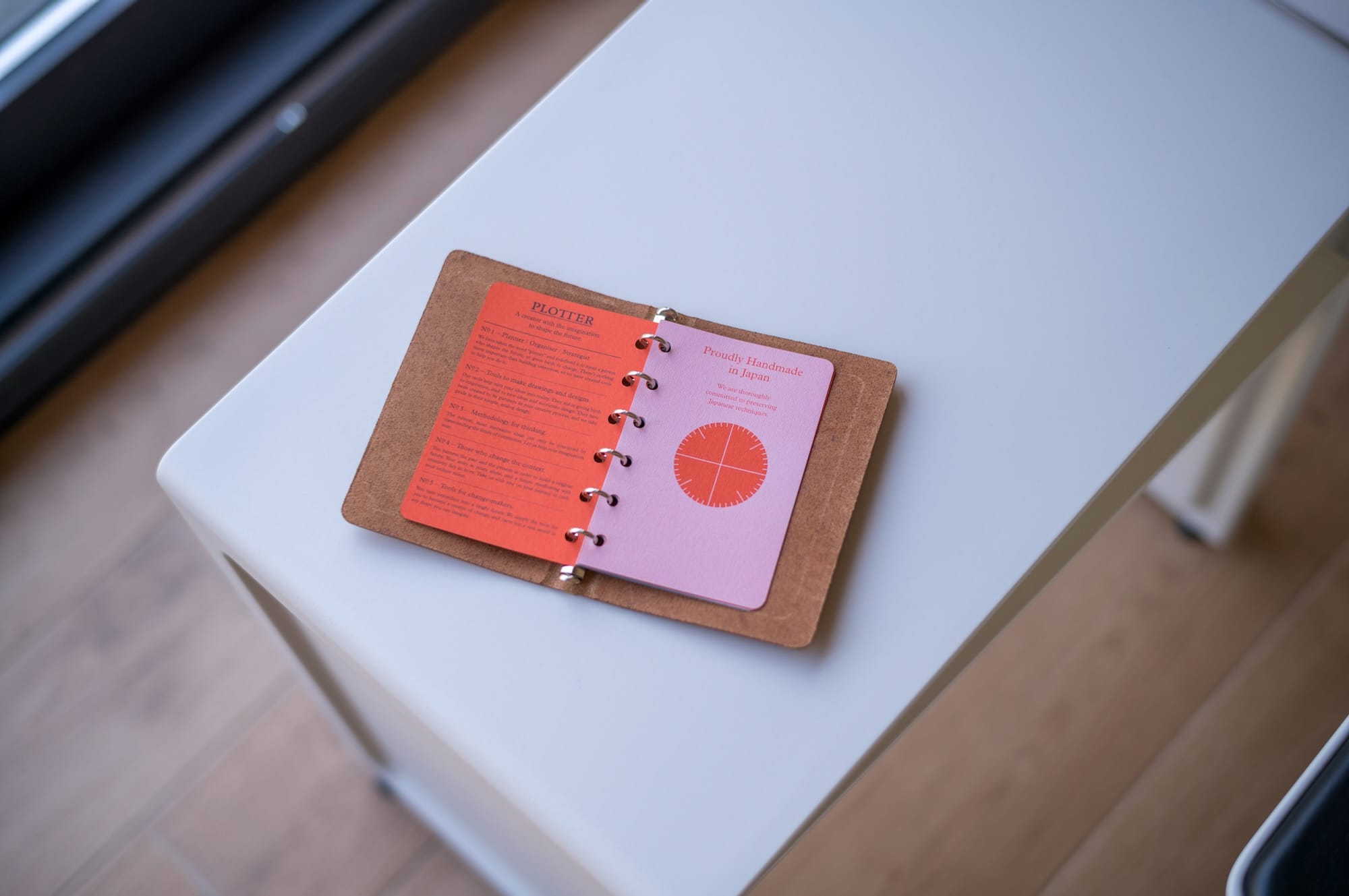
Plotter was created in 2017 in Japan, and then introduced in the U.S in 2022. It's only being sold in those two countries, but there a few ways to get them in Europe or other countries, which I'll explain later. Checkout the video from Takayuki Saito, the founder of Plotter, where he explains how Plotter was evolved and created:
Rings
Plotter’s unique feature lies in its small sized rings, measuring only 11mm. This size imposes a limitation on the number of pages that can be placed within the notebook, typically around 80 pages. While this might appear as a disadvantage, it actually serves as a constraint that encourages the user to carry only the most essential.
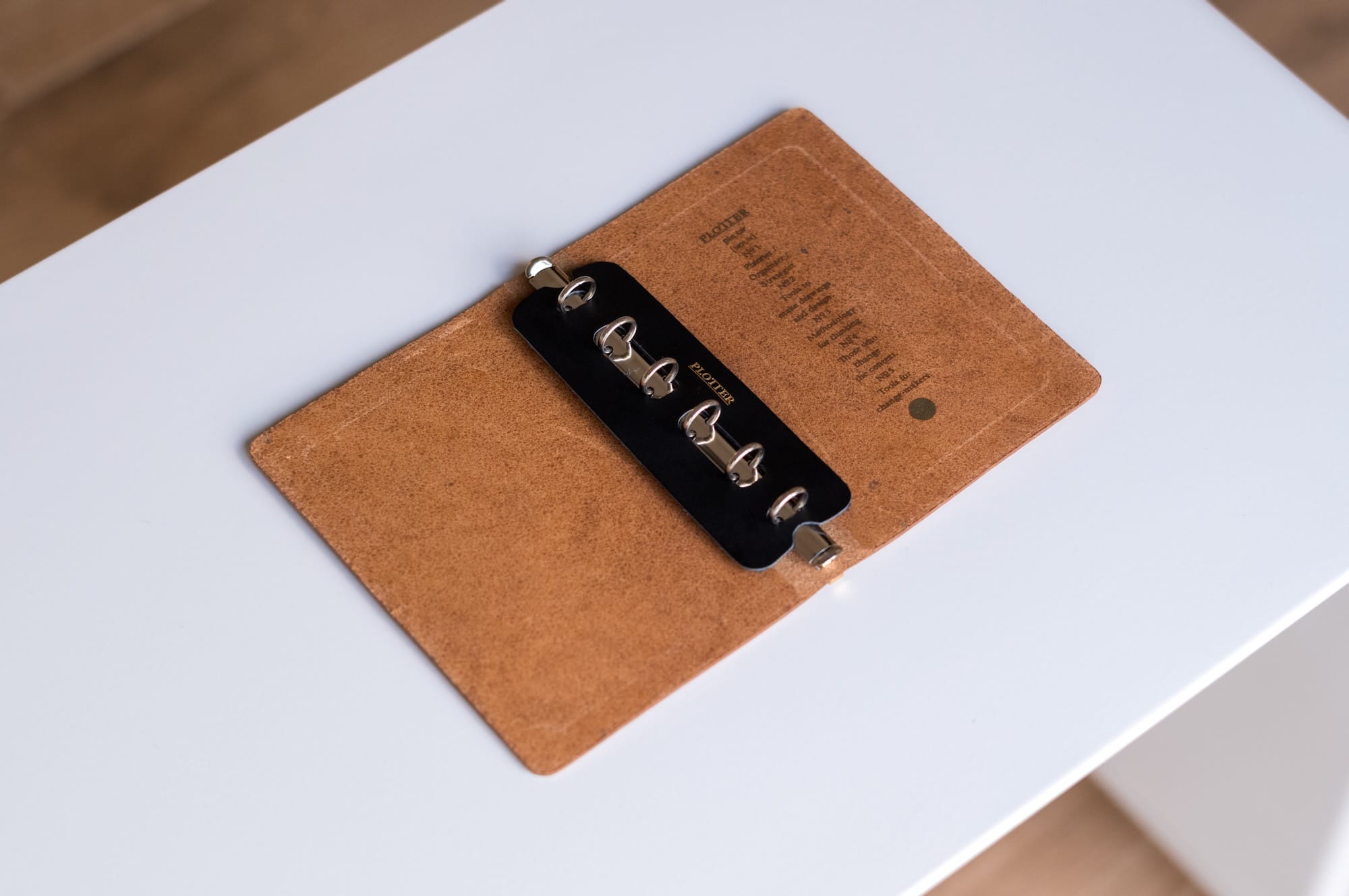
Once a certain point is reached, the pages that are no longer required can be archived (checkout my Zettelkasten blog post about a method you could for example use with Plotter) or thrown away. Plotter provides a refill storage as well. The Ring system is based on the design of Krause, which is also used by other brands. It's a well known brand providing high quality ring systems. Most companies get it from them. Therefore, you have the option to use papers (refills) from other companies as well.
Size and Leather Type
Before you begin using Plotter, you must select your Leather Binder, which will hold your papers (or what they refer to as “refills”). It’s a single piece of leather securely attached to Plotter backplates. The backplates are crafted from brass and coated with various gold colors, which vary depending on the type of leather used.
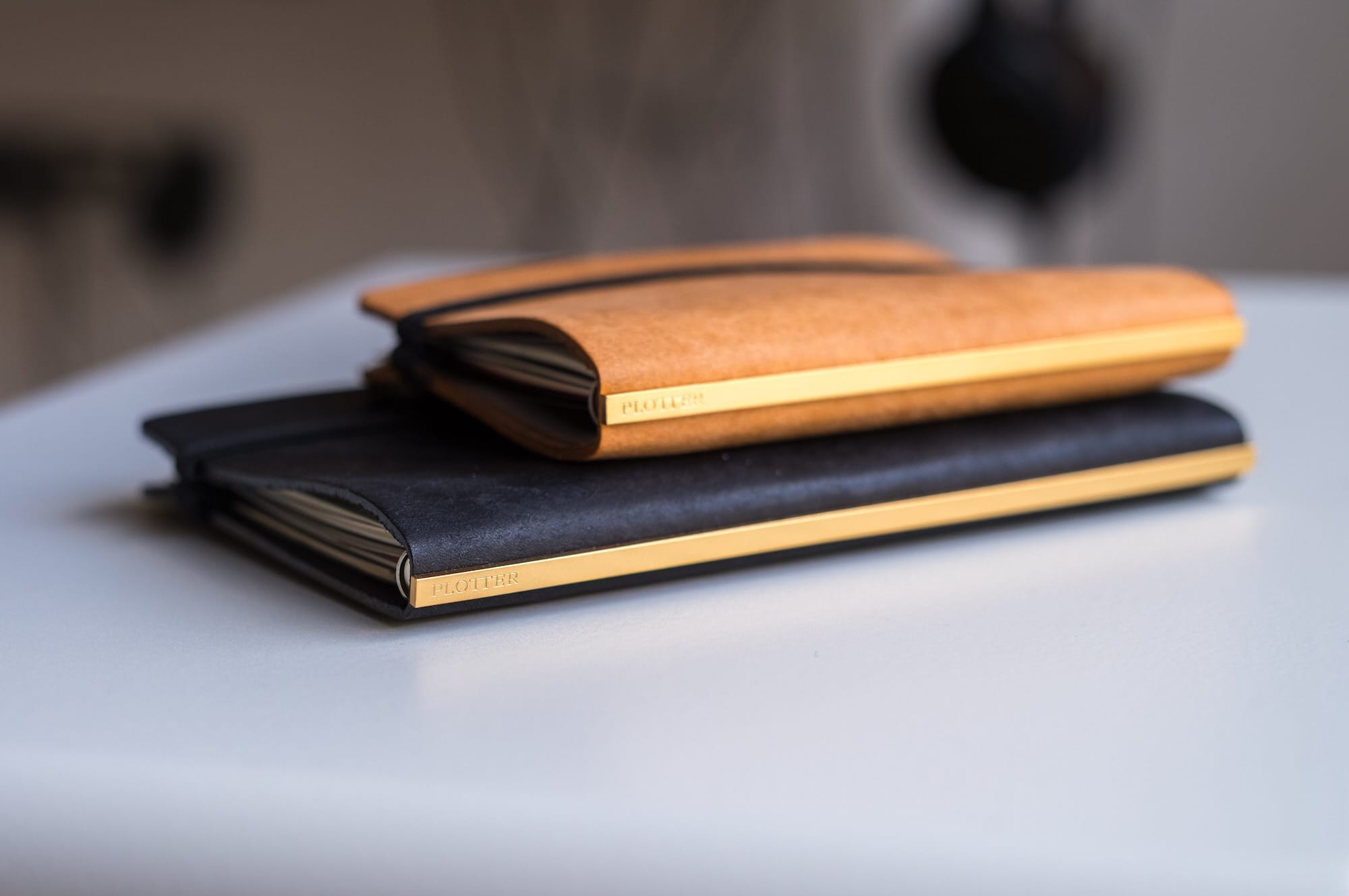
There are several sizes you can choose. As of 2025 these are from largest to smallest:
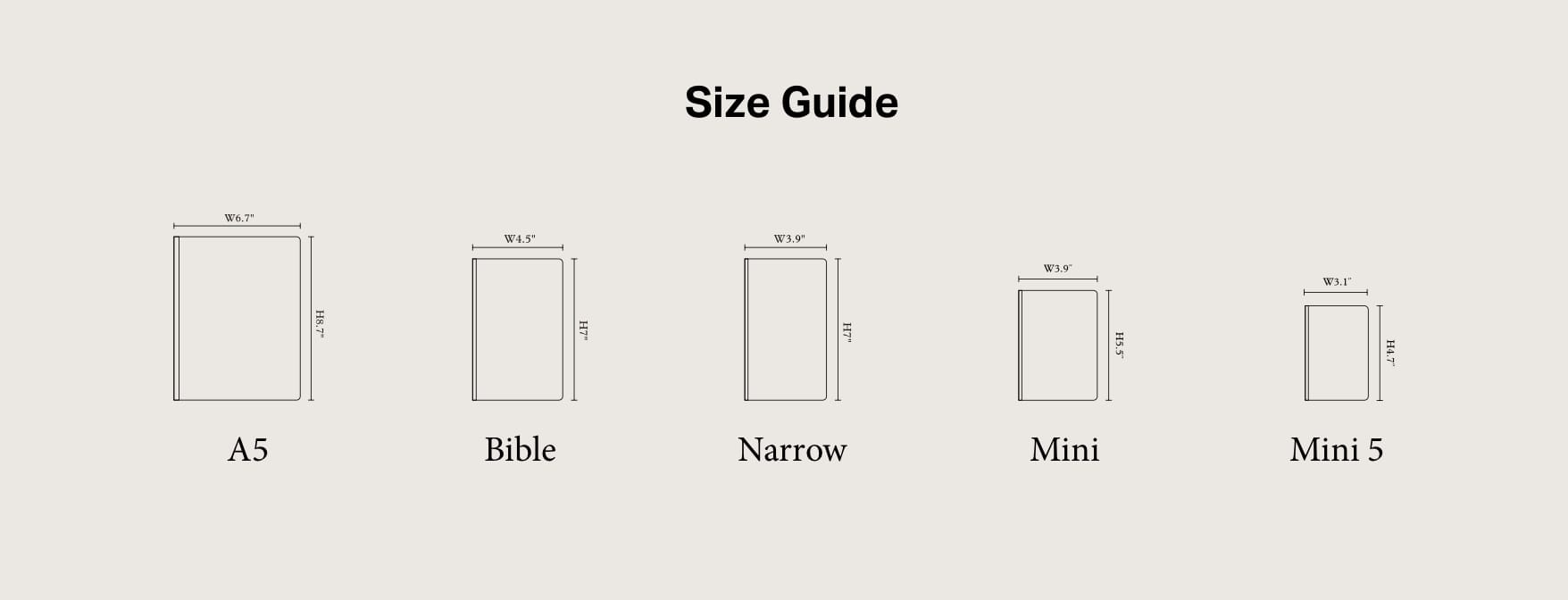
- A5
- Bible (In Japan the size
Personalis called Bible) - Narrow
- Mini
- Mini 5
Each of these sizes comes with different leather options, each looking different, with different textures and colors. The most popular one is the leather called "Pueblo" with a gold-plated brass backplate. That's also the one I've picked up. However, Plotter releases limited editions of different leather types or backplates, so there is a certain type of collectibility if you're into it.
Refills
Once you’ve chosen the leather type and the size of the binder, the next steps involve adding the various accessories and paper refills. Plotter offers a range of accessories that enhance the user experience of their notebook system.
Accessory Refills
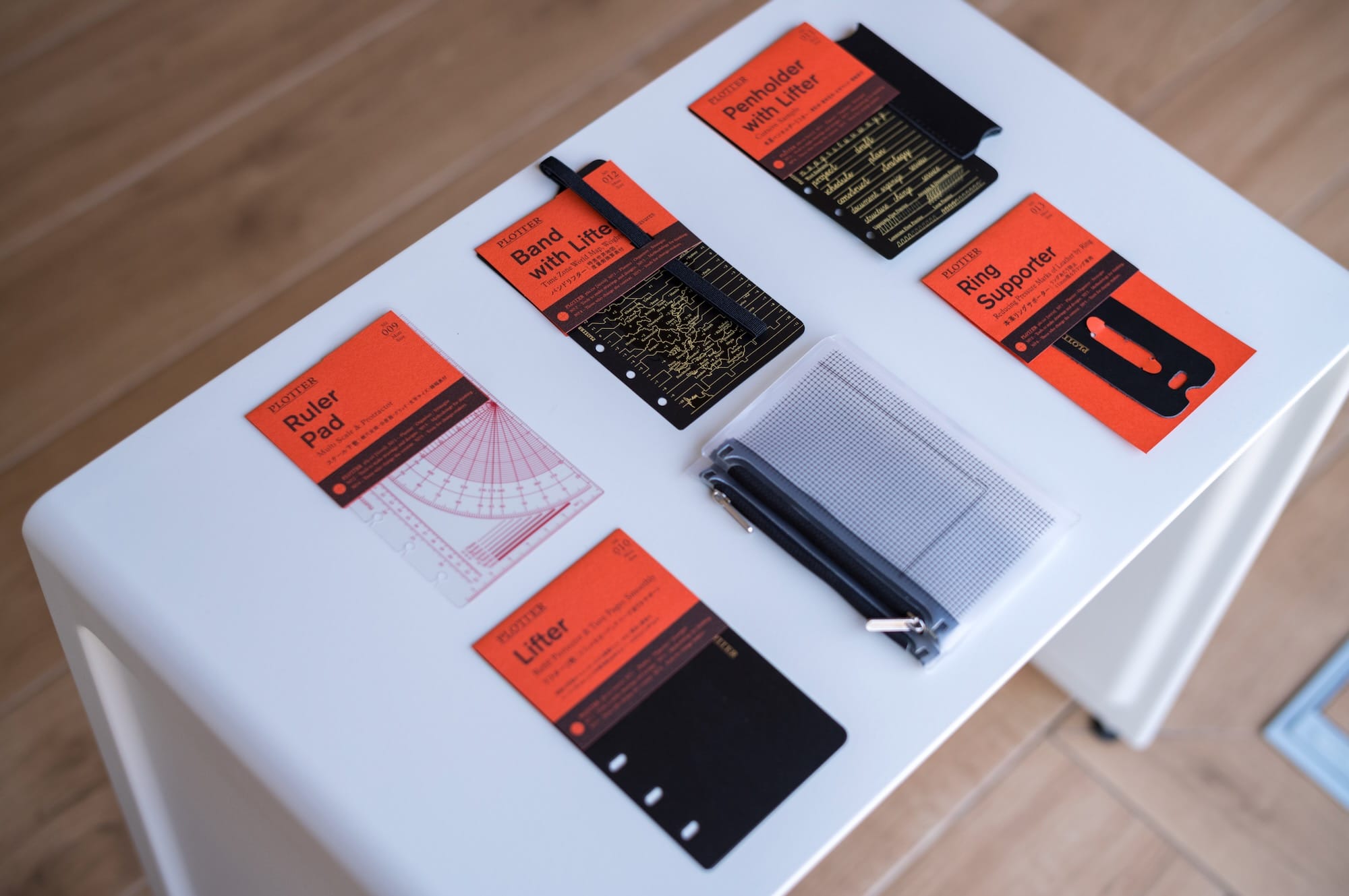
Let me first go over the non-paper refills. Here are some of those:
- Lifter: It's essential a plastic divider and used for multiple purposes. Added to the beginning and the end, it protects the paper refills from the leather contours. It's also useful for dividing between different paper refills.
- Band with Lifter: A lifter with an elastic band to keep the Leather binder tight.
- Penholder with Lifter: A lifter with a leather pen holder.
- Ruler Pad: A refill that can be easily detached/attached. You can use it as a ruler, protractor, line width chart, but also as a bookmark due a small protrusion.
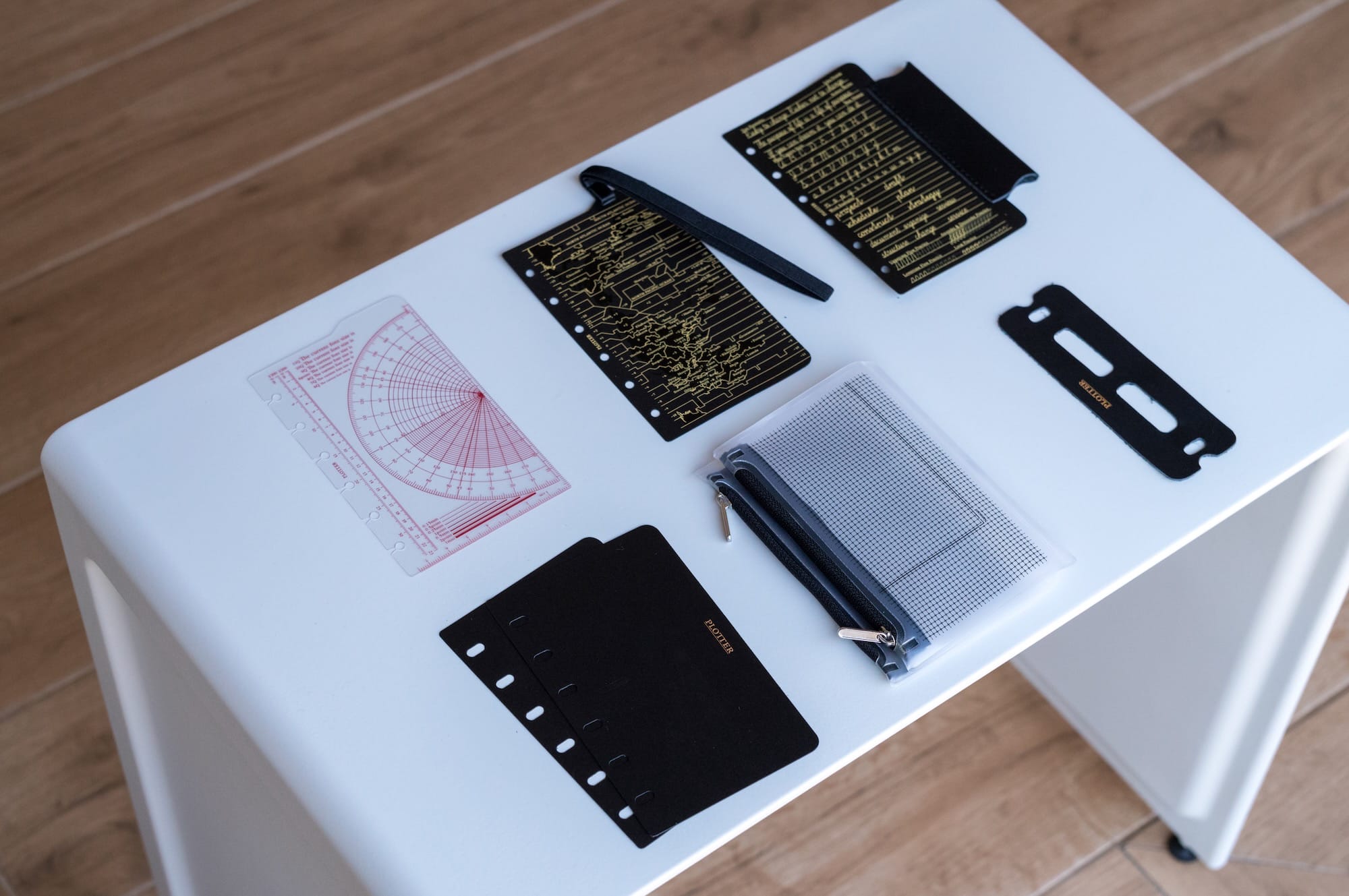
- Leather Ring Supporter: It reduces dents caused by the rings to the leather. It also cushions and protects the rings from unintended impact.
- Fastener Case: A zipper pouch solution. It's made with a translucent material with a grid pattern with the right amount of transparency. You can quickly find what you need, but also hides your items in a subtle way.
- Project Manager: These are designed to organize refills by themes with folders, or use them as an index.
Paper Refills
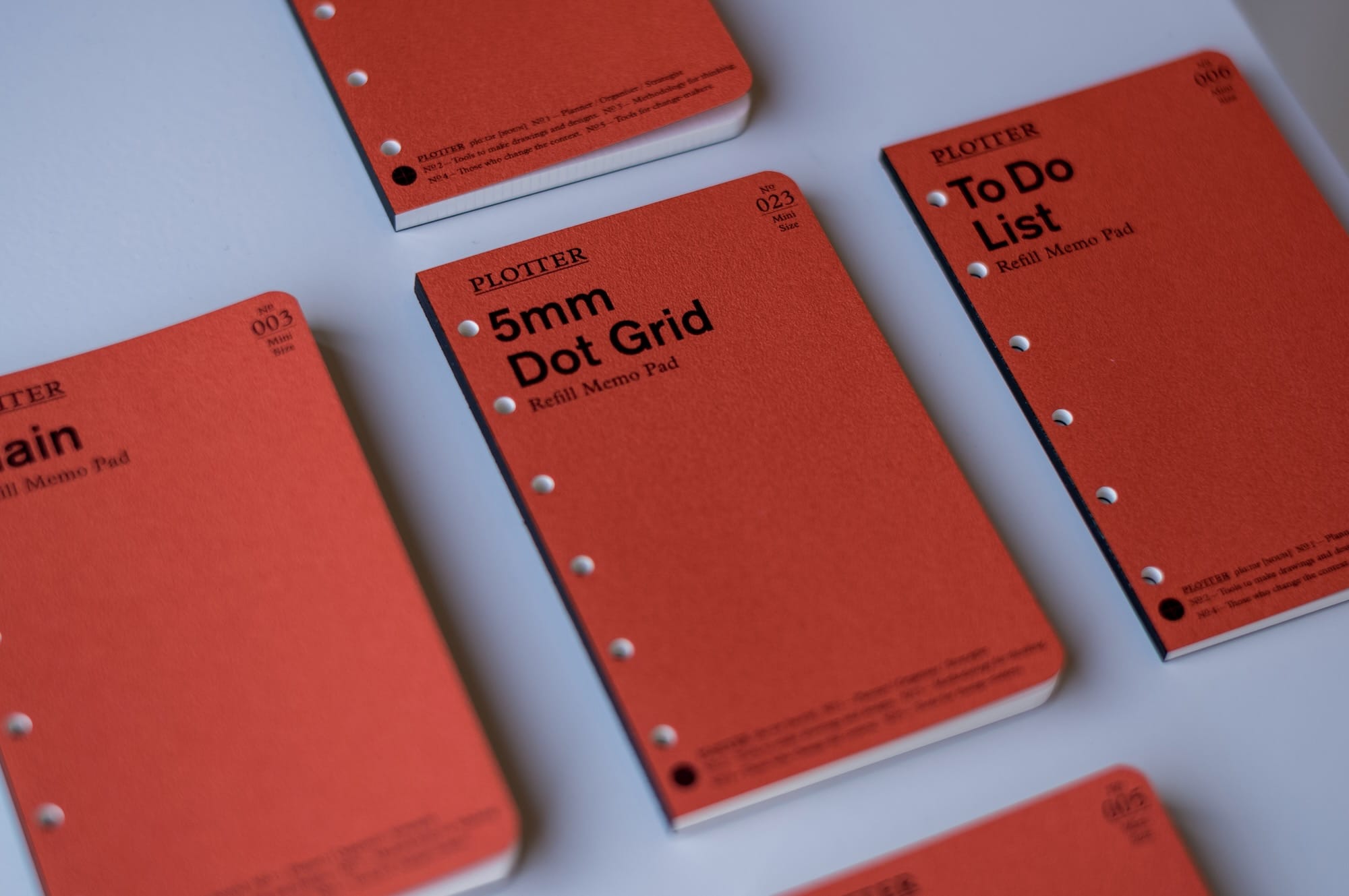
The Plotter Paper Refills are glued together like a notepad, and this allows us to carry them easily unlike other brands. Each Refill contains 80 pages. Here are the official paper refills you can put inside your Plotter Binder:
- Plain
- Dot Grid (5mm)
- Grid (2mm)
- Ruled (6mm)
- To Do List (a handy paper refill with progress bar)
- Monthly Schedule
- Weekly Schedule
These are the official Plotter refills, but the beauty of this system is that you can also obtain them from other brands, or even create your own! Some brands include Filofax (a sister brand of Plotter), Knox, Davinci, Bindex, Ashford, Life, Graphilo, and Kamiterior. Filofax was quite easy to find when I was traveling in Germany, as it seems to be well-known in Europe.
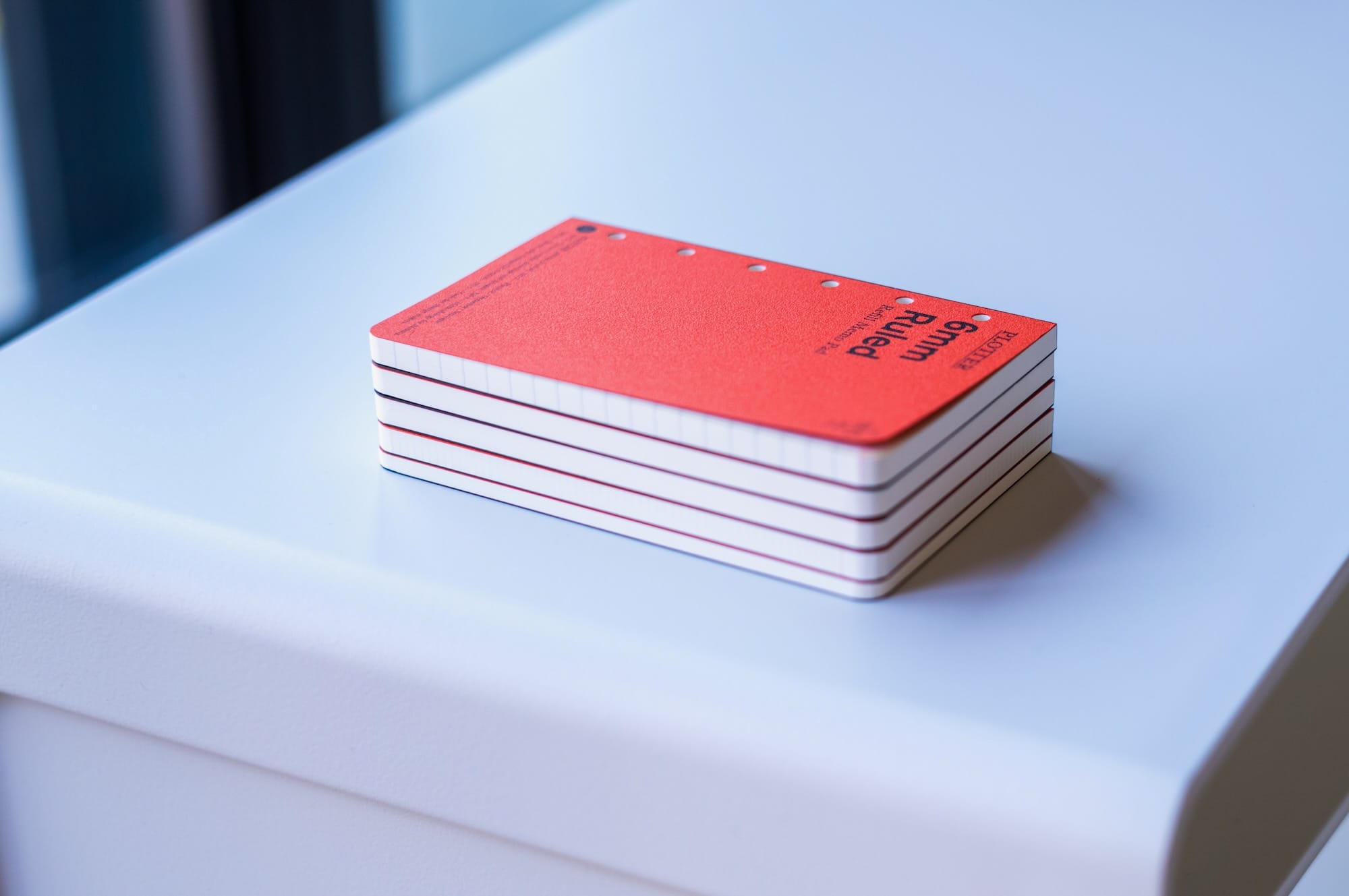

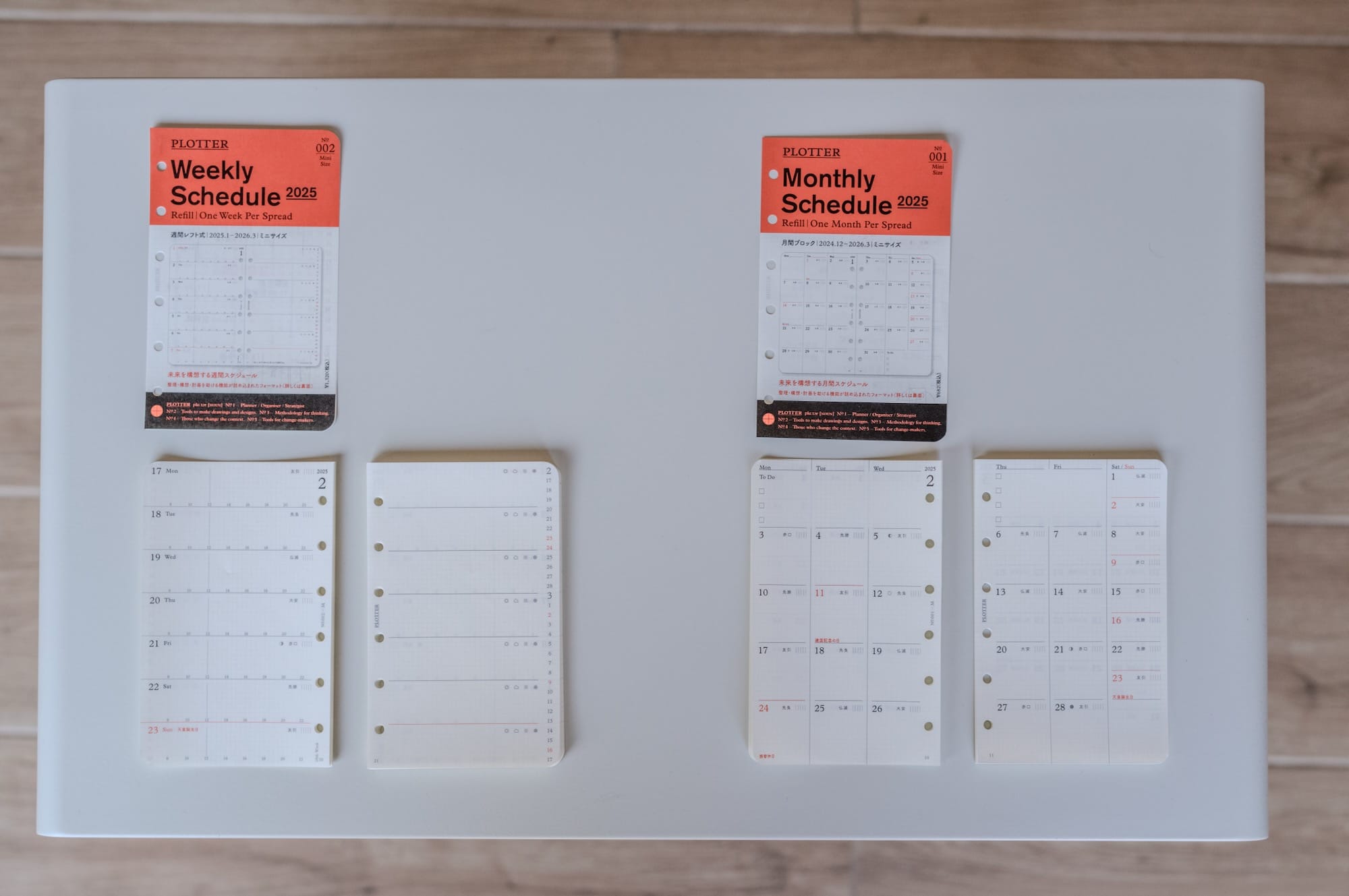
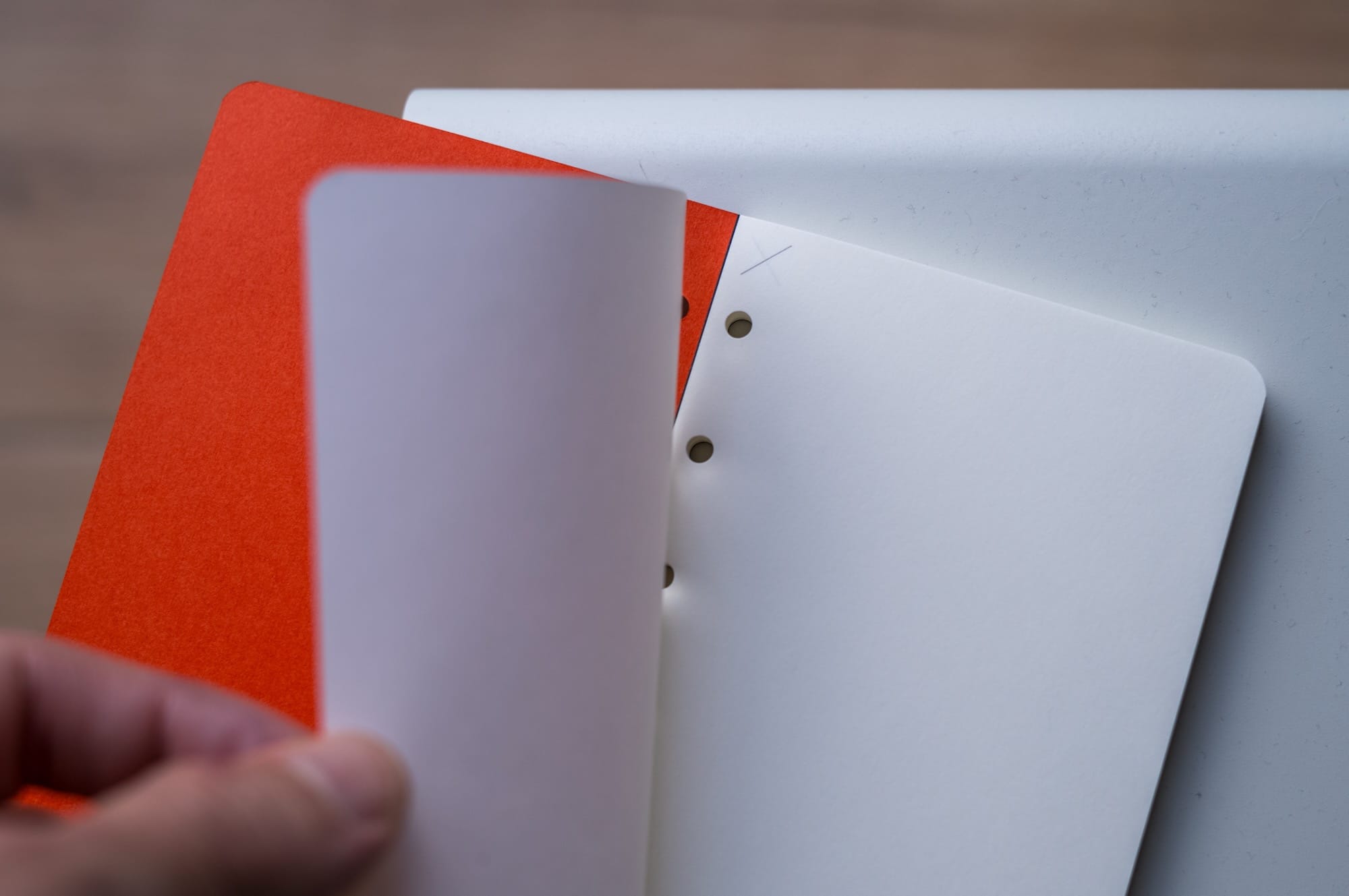
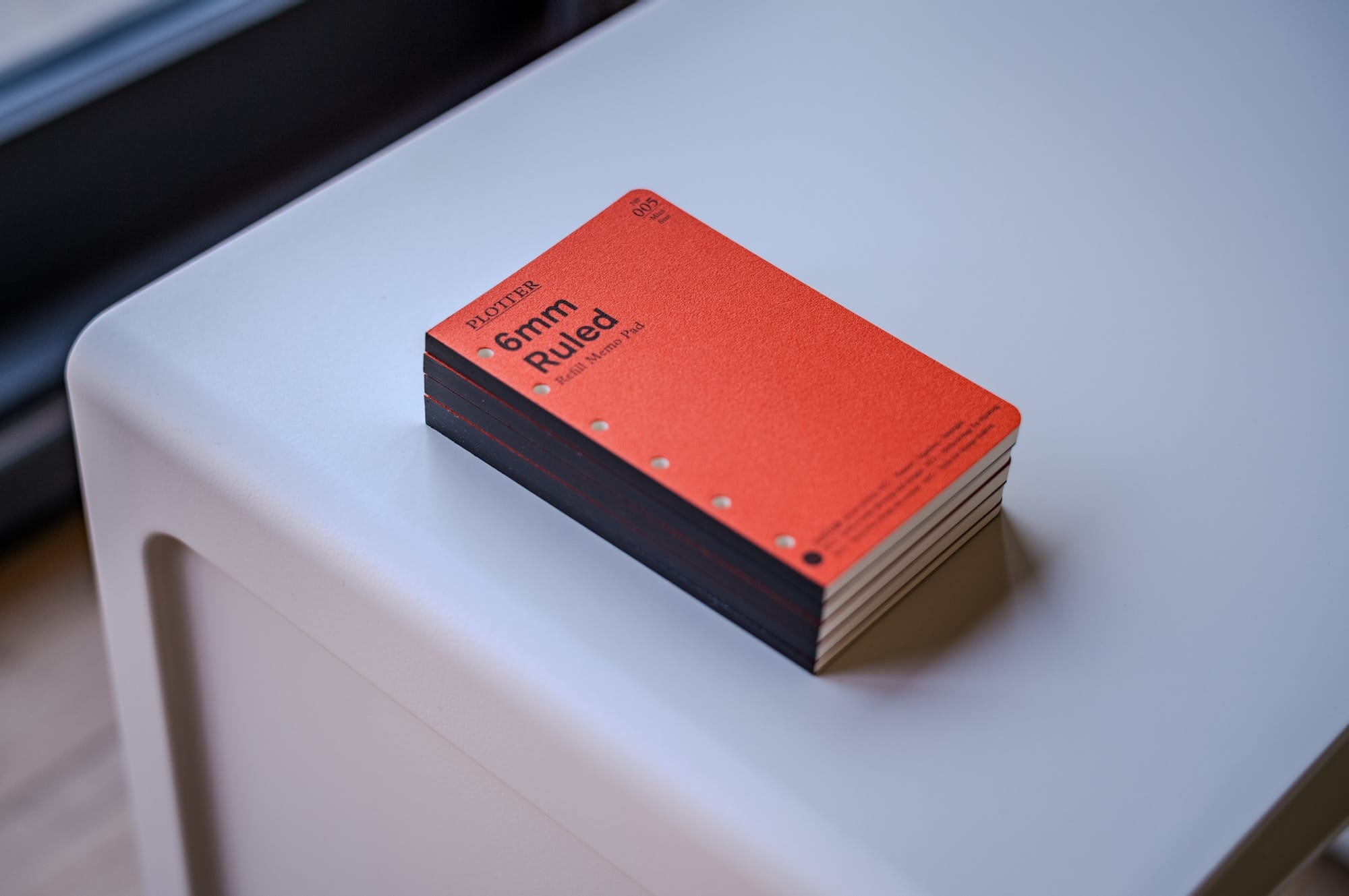
However, since this is a Japanese system, the majority of refills can only be found in Japan. Fortunately, Amazon.co.jp sells most of these, which is how I managed to get some of them. For instance, I couldn’t find the weekly schedule for my Bible sized Plotter, so I bought the alternative from the Davinci brand. The papers from these Japanese brands are excellent, and most of them are fountain pen friendly, which I appreciate.
How do I use Plotter?
Now that I listed all the refills, let me show with photos how you could in theory create your own system using all these accessories and paper refills. Below I'm going to show a series of photos that shows how I my established my Plotter arrangement from scratch (I've used the photos of the Mini sized Plotter, however I use a Bible sized Plotter, the concept is the same though).
- First, we'll add the ring protector. This will make sure to protect the leather against the ring’s pressure. The rings will still cause some marks on the outside of the leather over time.
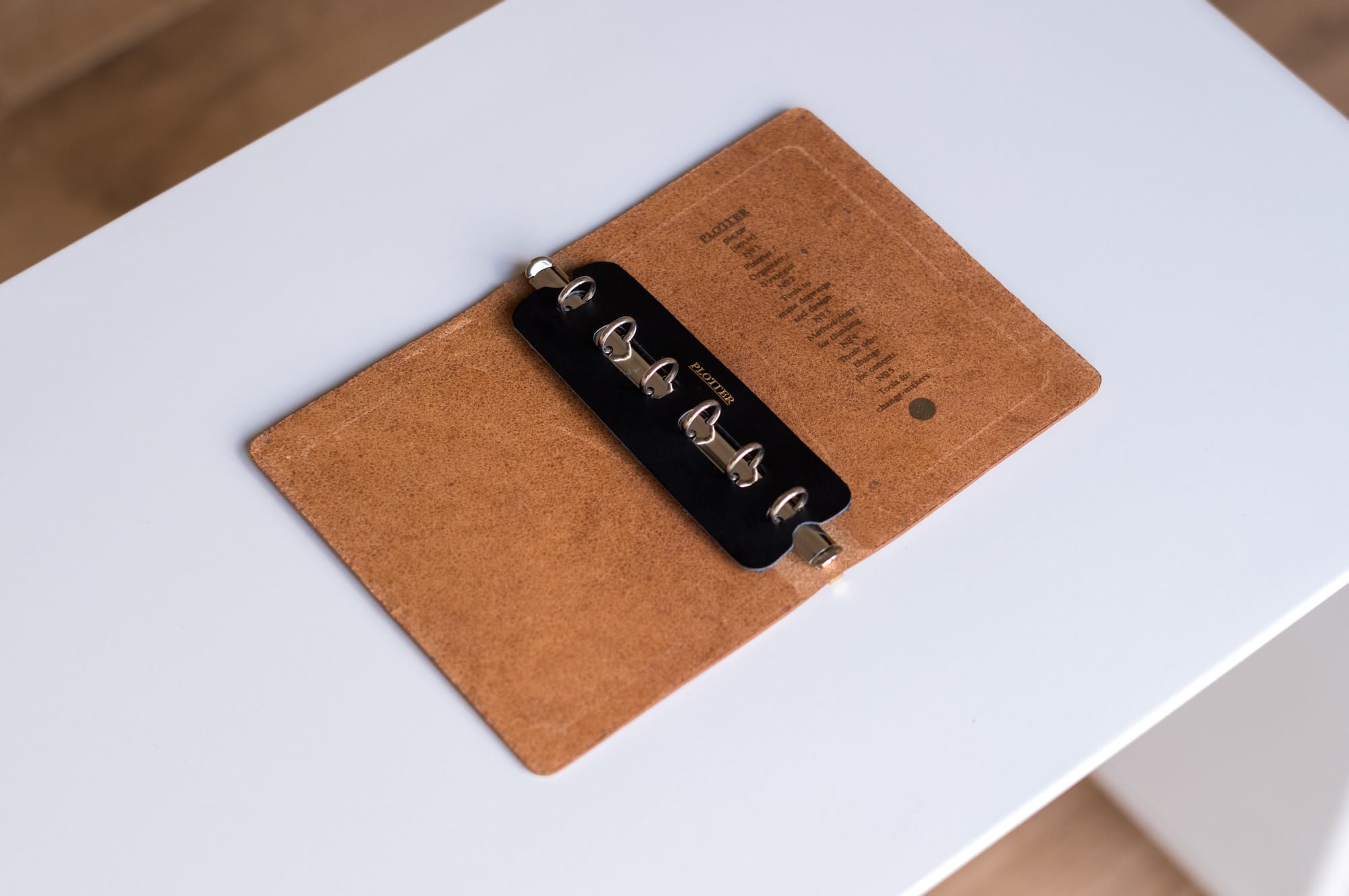
- After the ring protector, we're going to add the
Fastener Case. This is the only way to add it, because once you start adding other refills, you won't be able to do it.
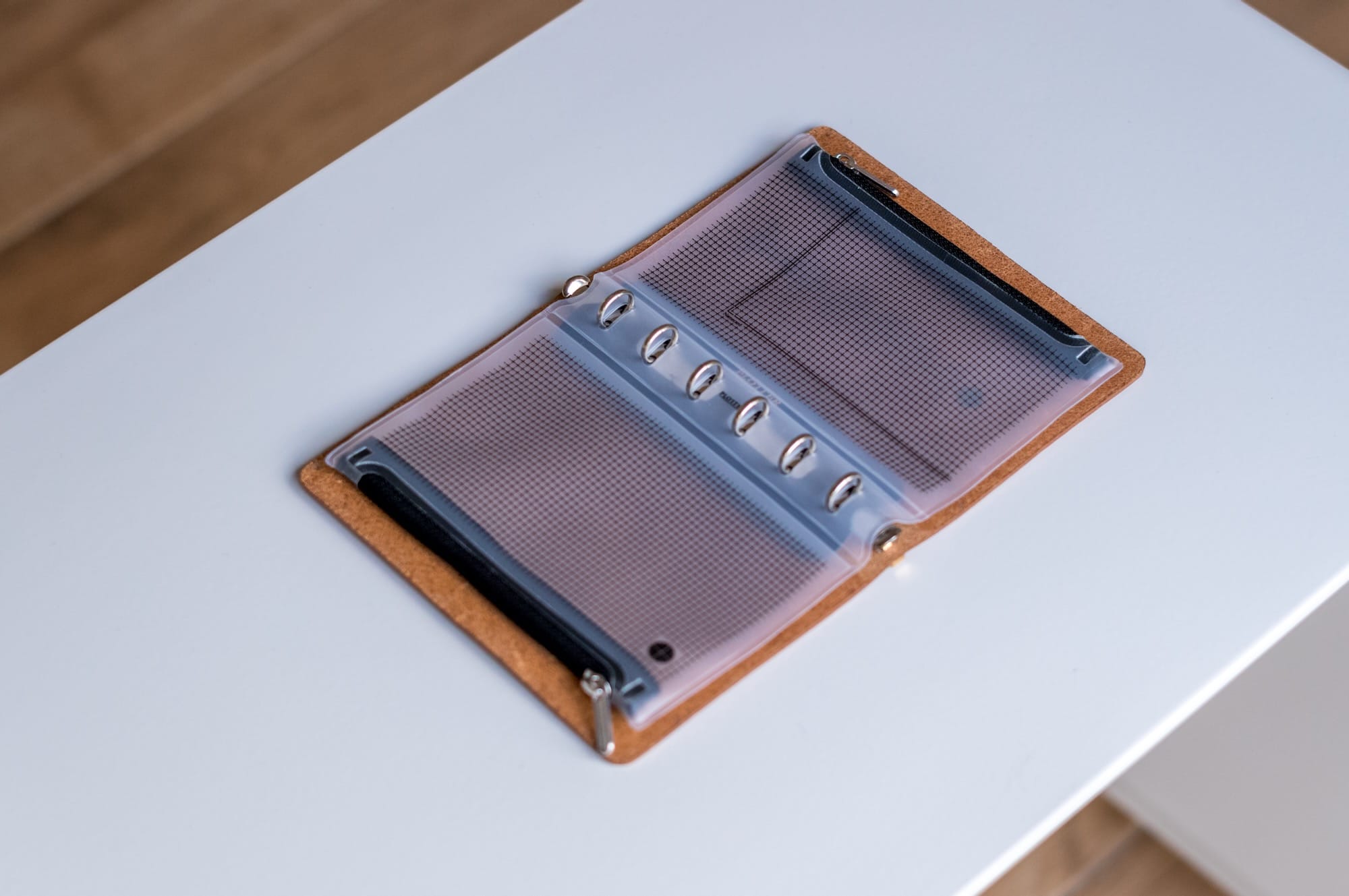
- Next we're adding the Lifter with pen holder. I think it makes the most sense to put the pen holder at the end, because the pen has a weight, and it makes easier to move around the other refills.
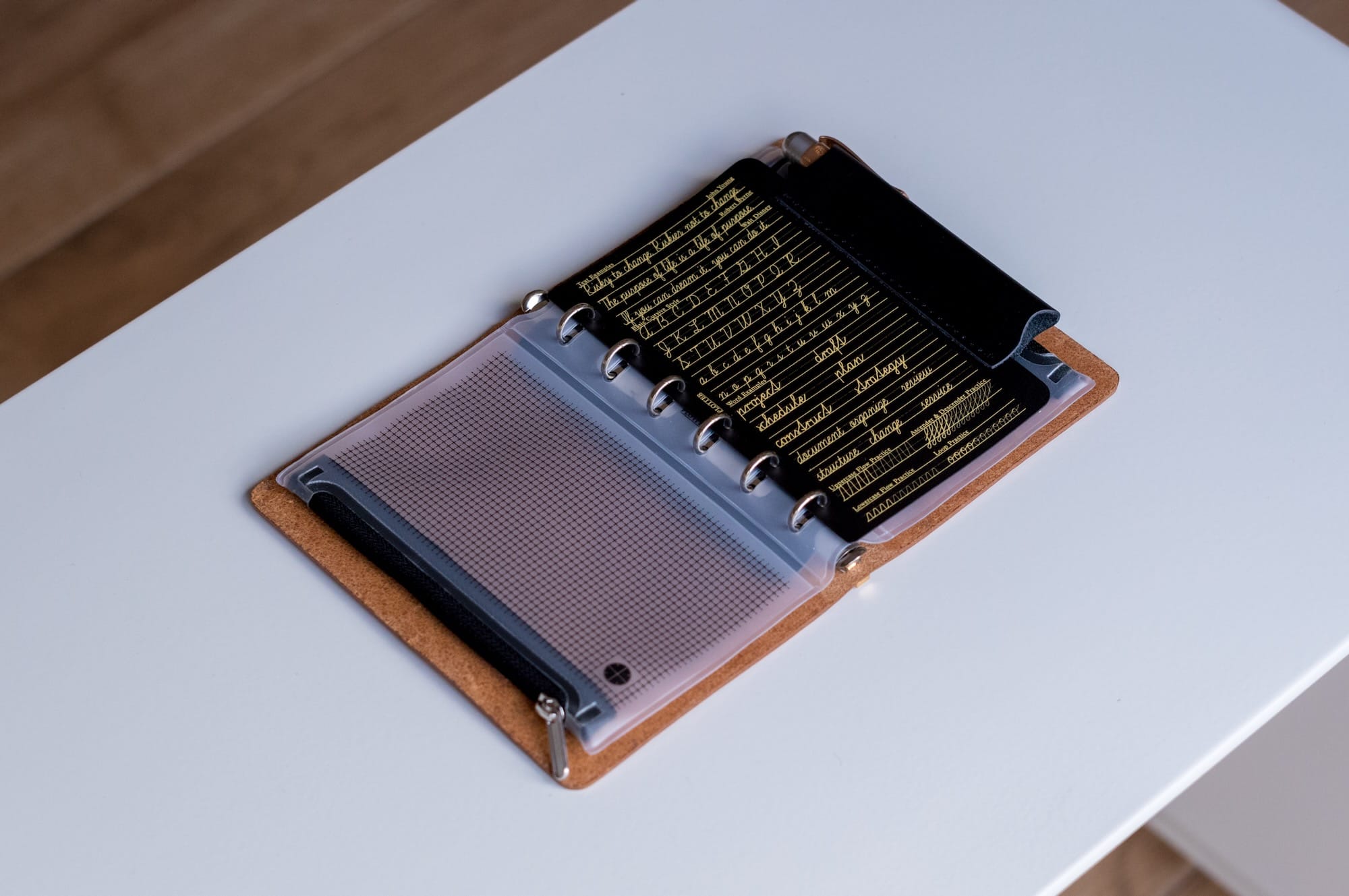
- After that we'll add the Band refill. I've changed the location a few time though afterwards.
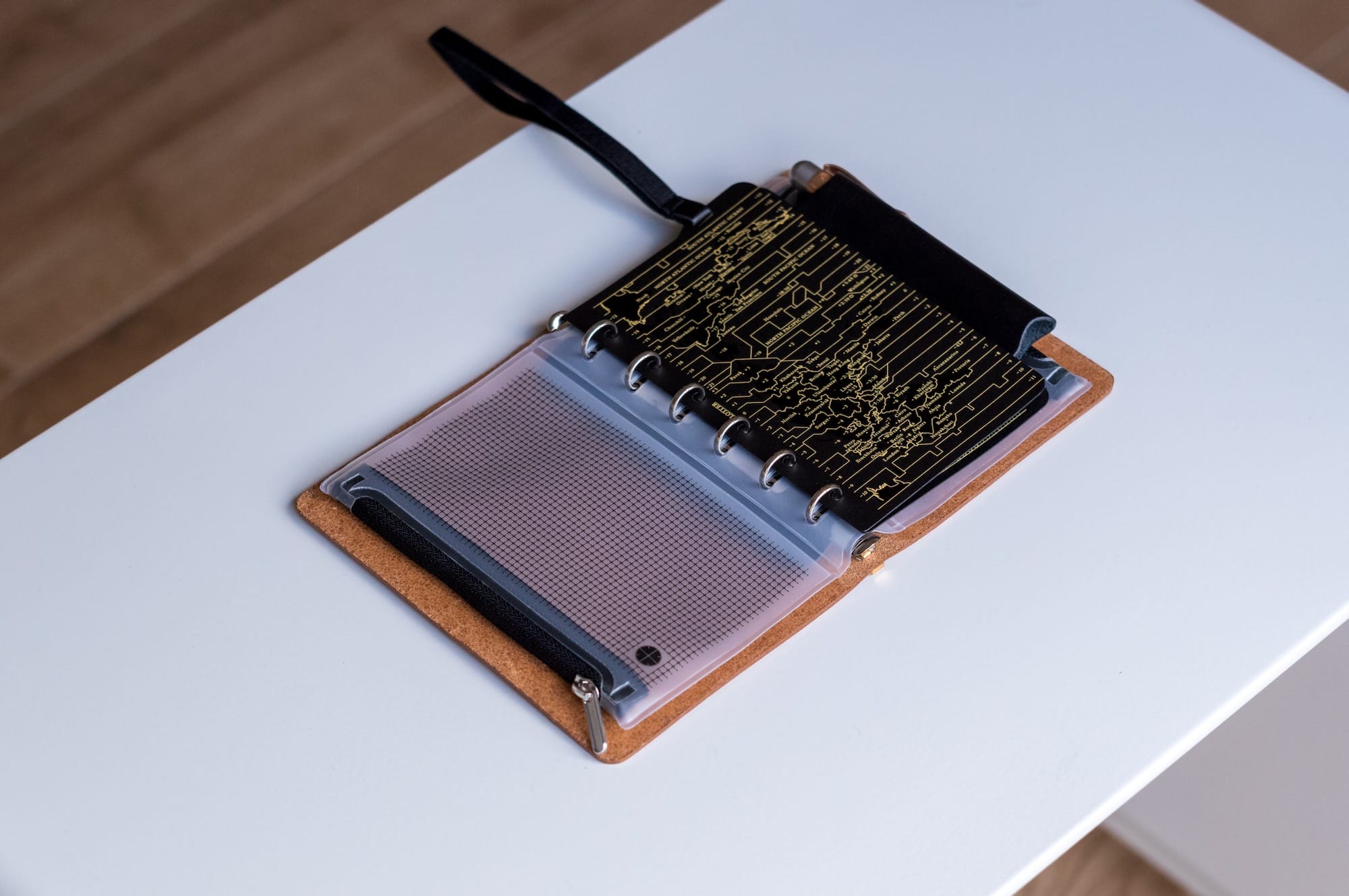
- Next comes Project Managers. Since project managers aren’t frequently used, it’s logical to place them at the end of the Plotter Binder. I have several project managers. These are essentially folders to put several paper refills in one place. It helps organizing them. For example in my case, one of them is the
Blogfolder, where I store my draft ideas for upcoming blog posts (this current post you're reading was created from my notes!). Another one is calledHabits and Goals, where I keep all my habit trackers and goals I’m trying to achieve (like the number of books I want to read in 2025). I plan to add aVacationandDesignfolder in the future once I have a few notes.
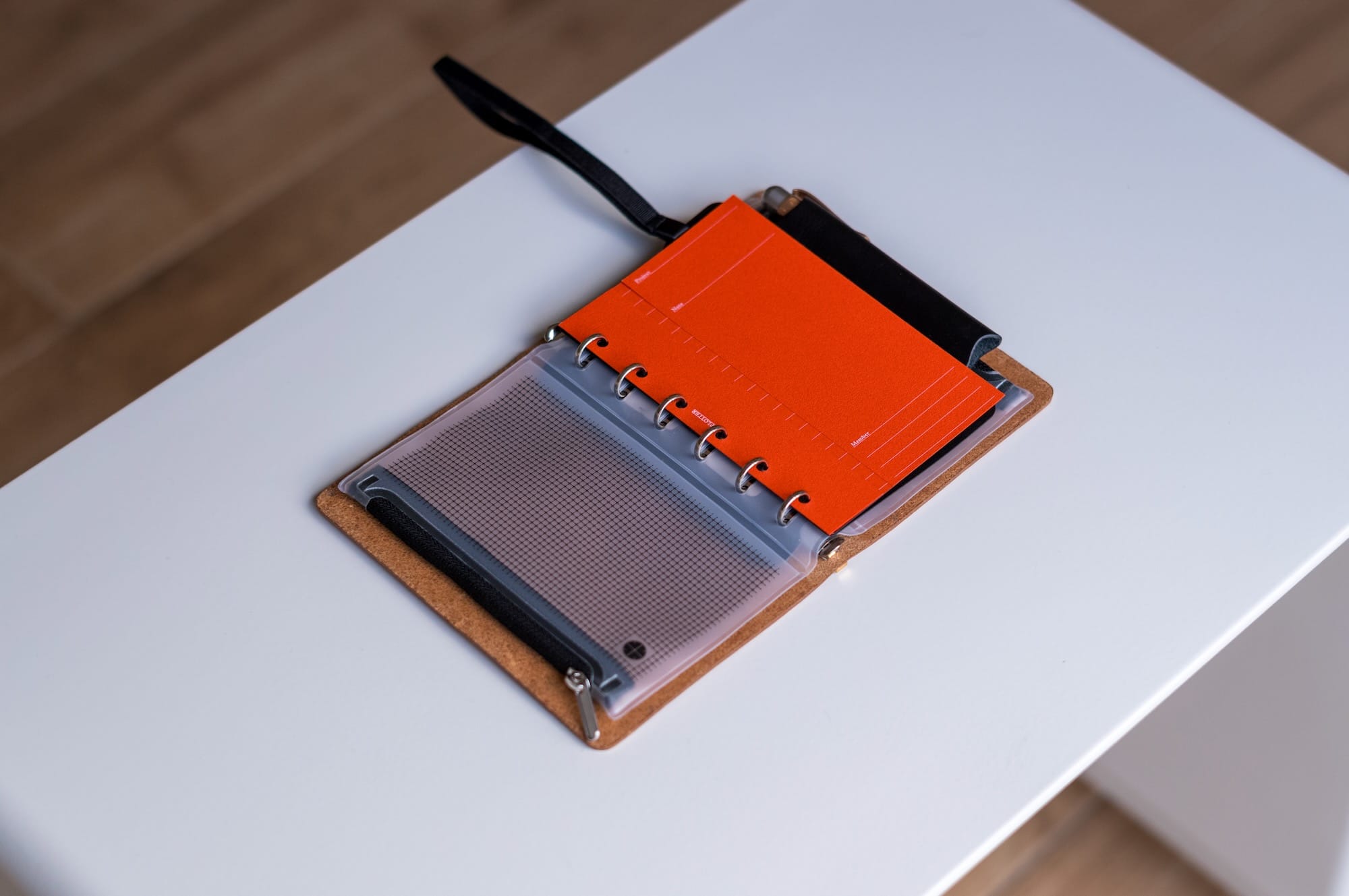
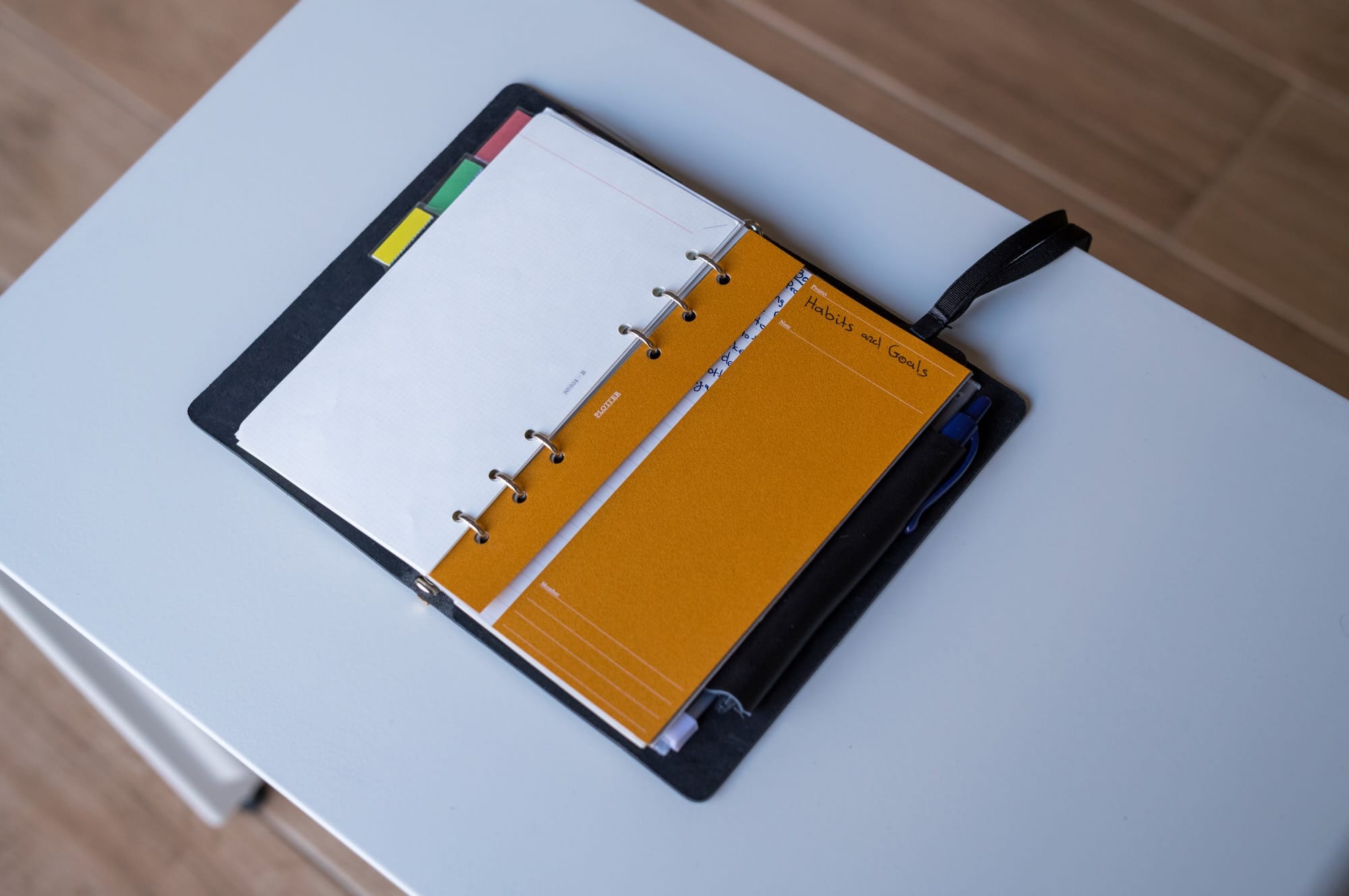
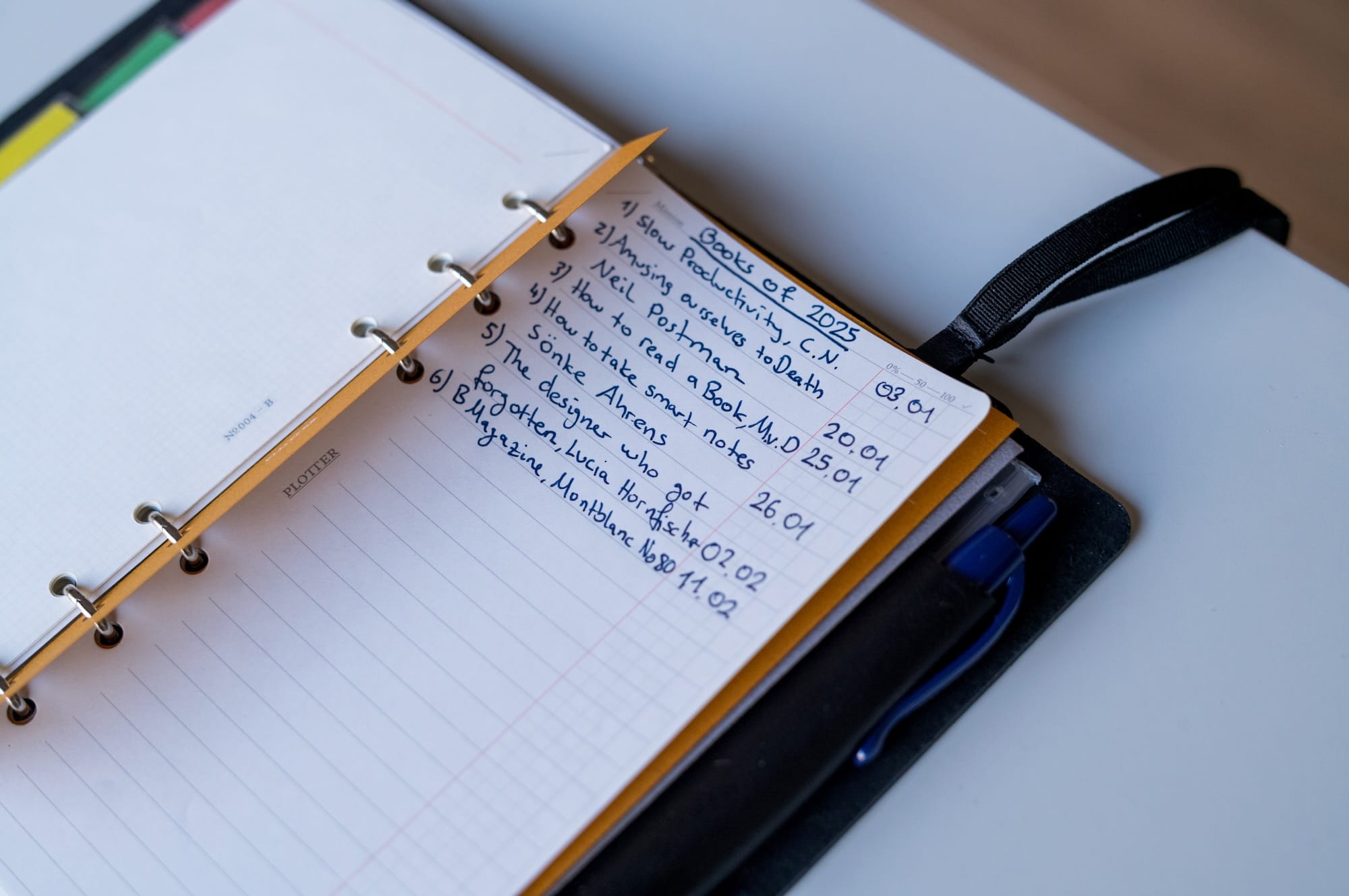
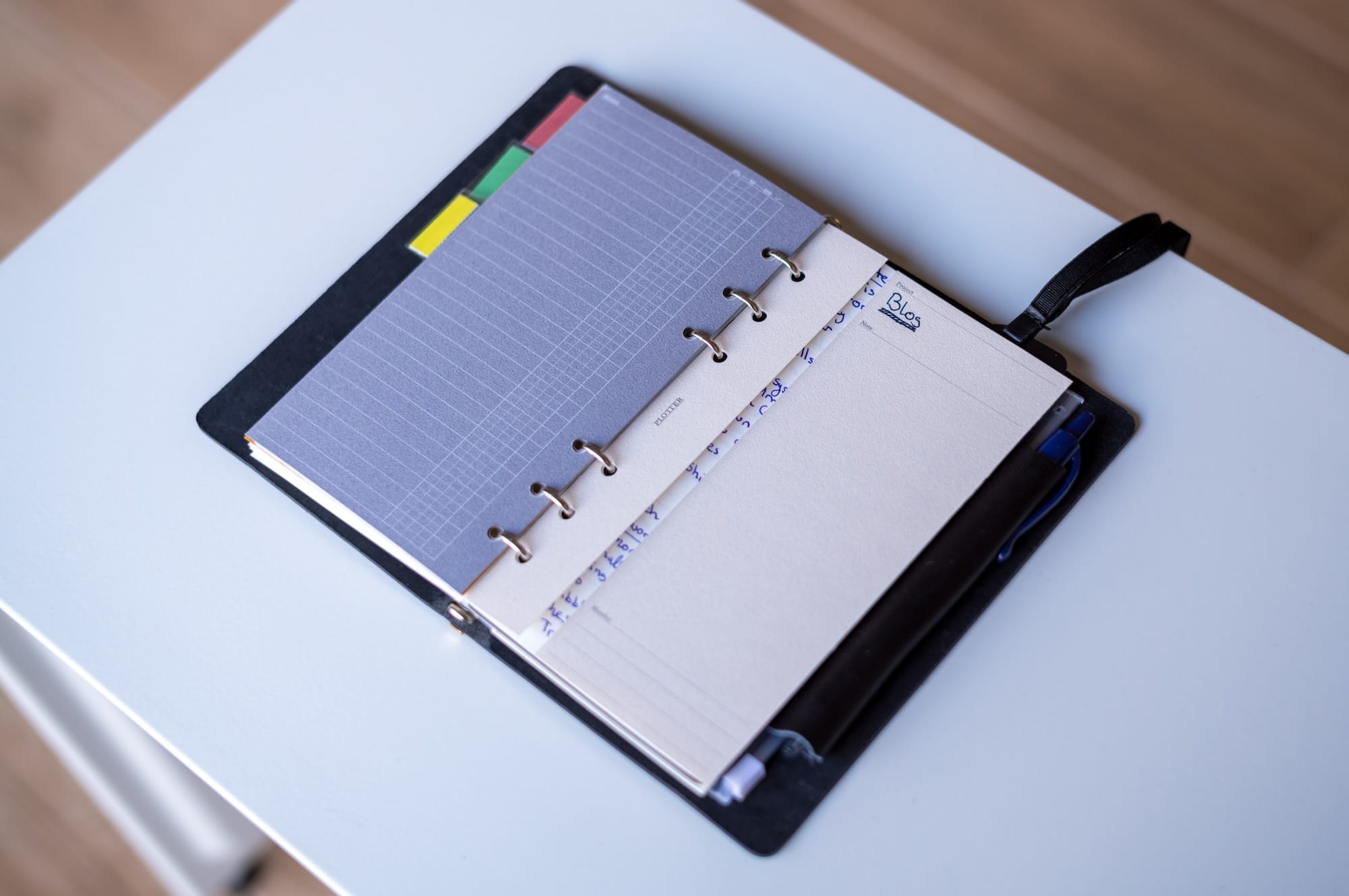
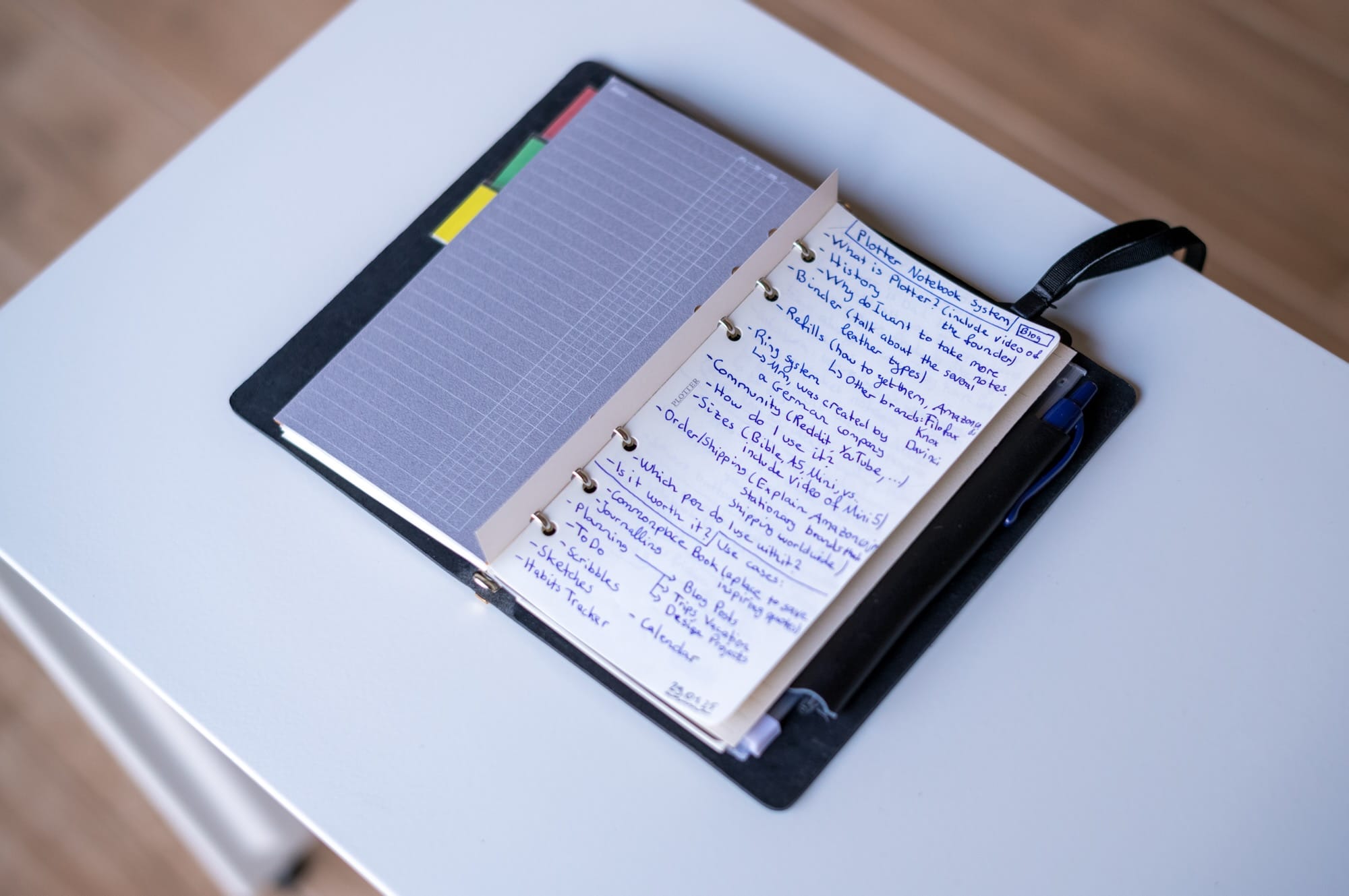
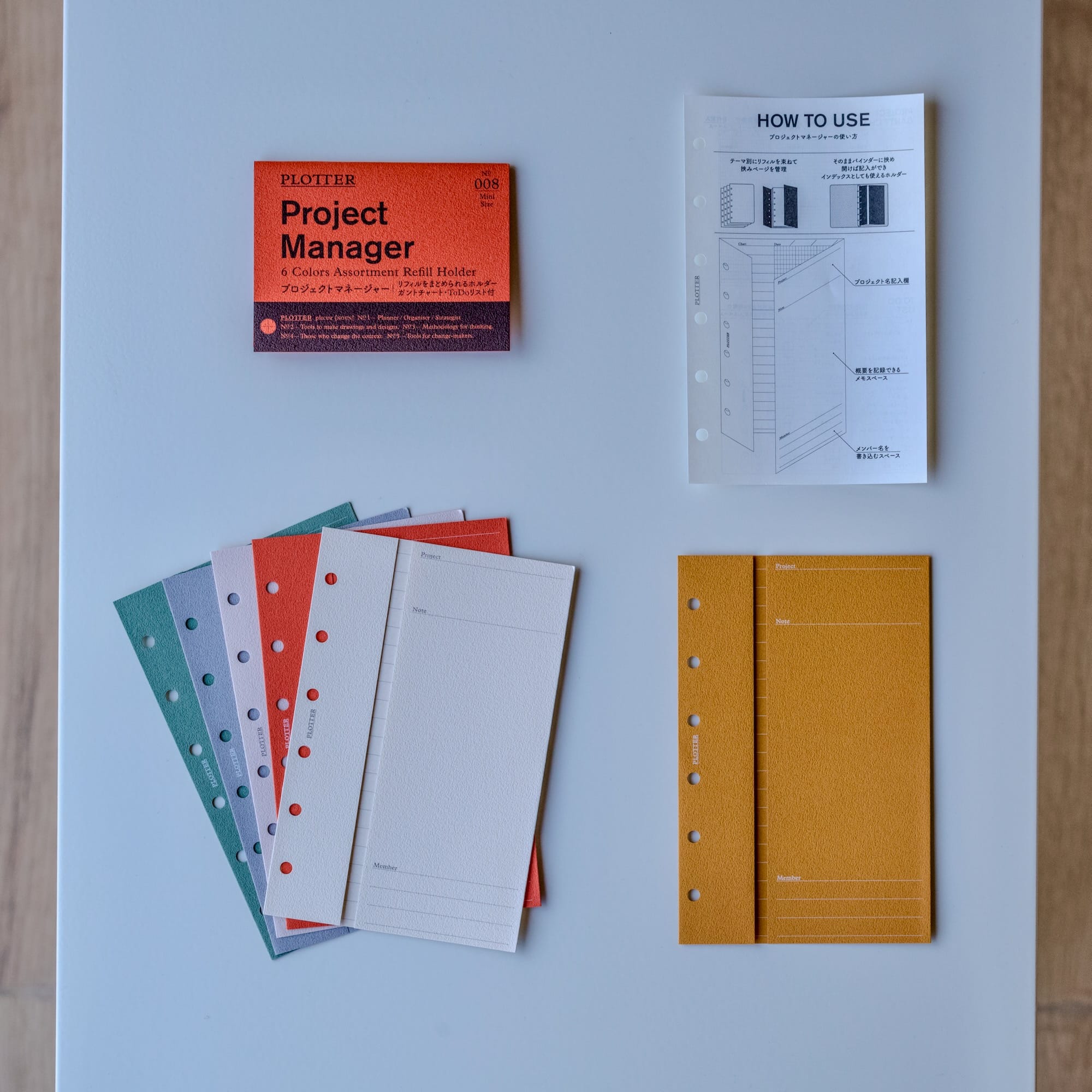
- Now, let’s begin adding paper fills. This section is what I call the
Notessection, where you can add whatever you like. I have a few plain and dot grids available. You can use these papers to write down rules, grids, or just plain notes. These papers are ideal for taking permanent notes or sketching/scribbling. Later, these notes might be transferred to a Project Manager.
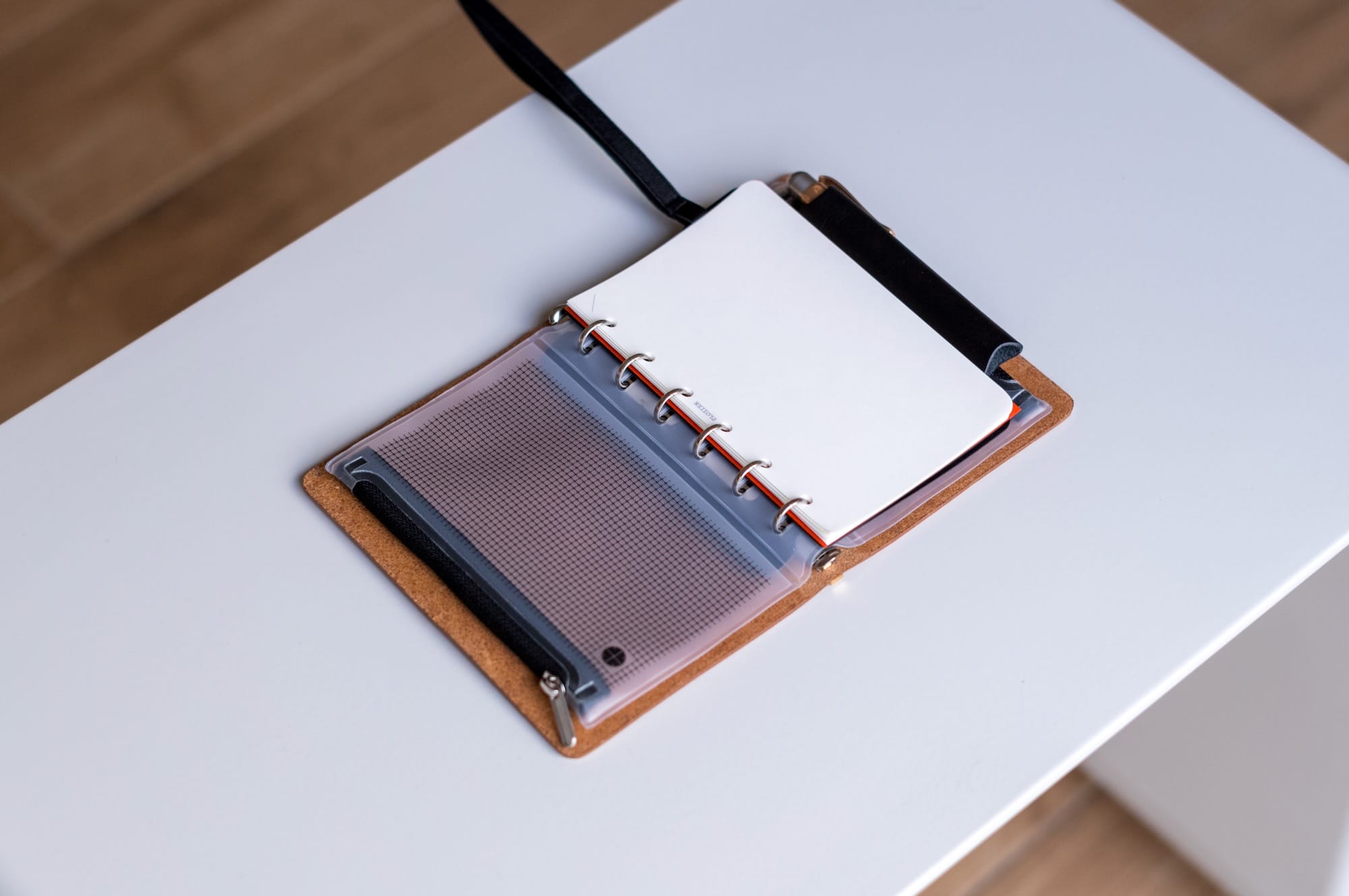
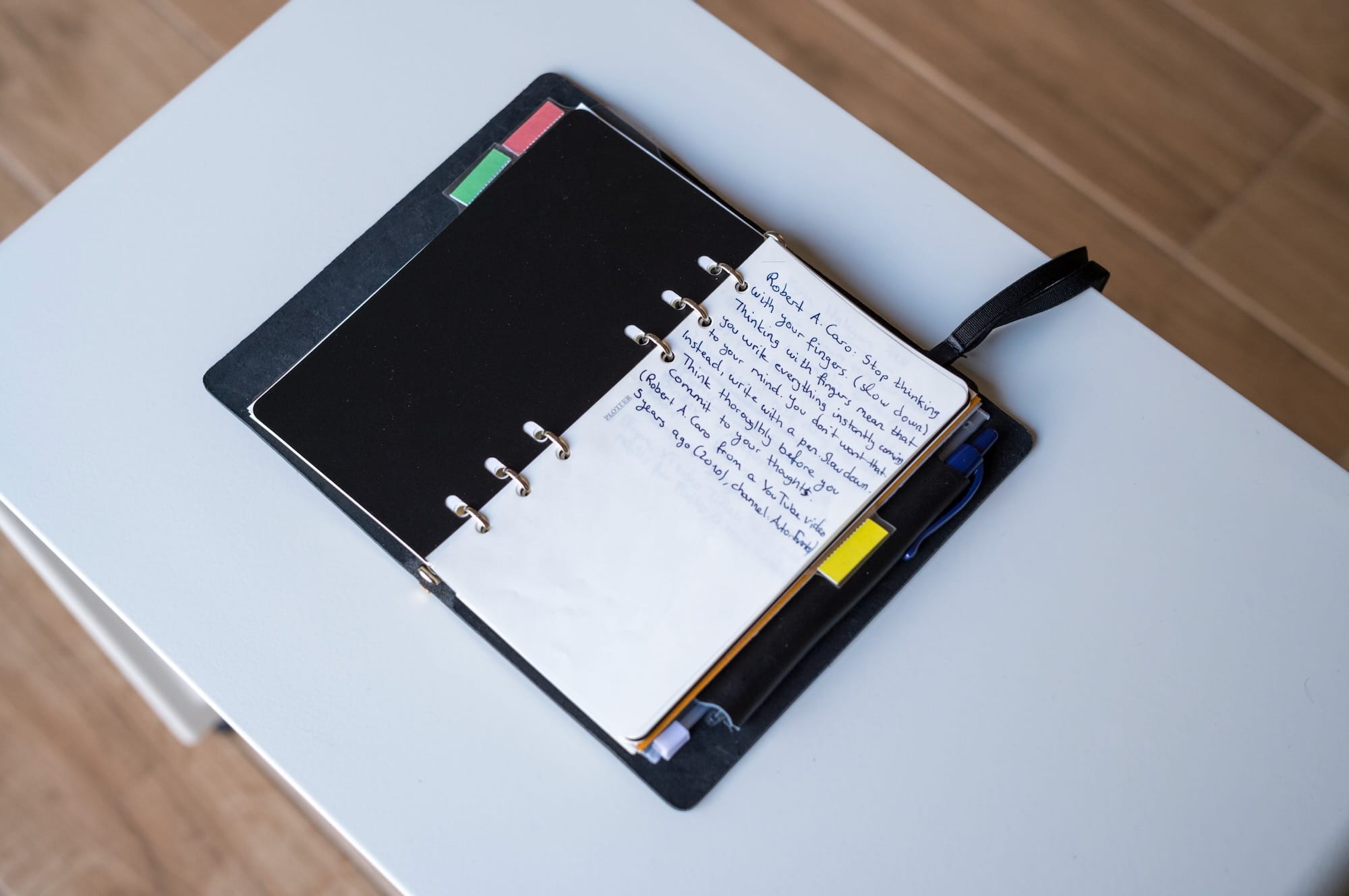
- To separate the next section we'll add a plain lifter. This functions a divider.
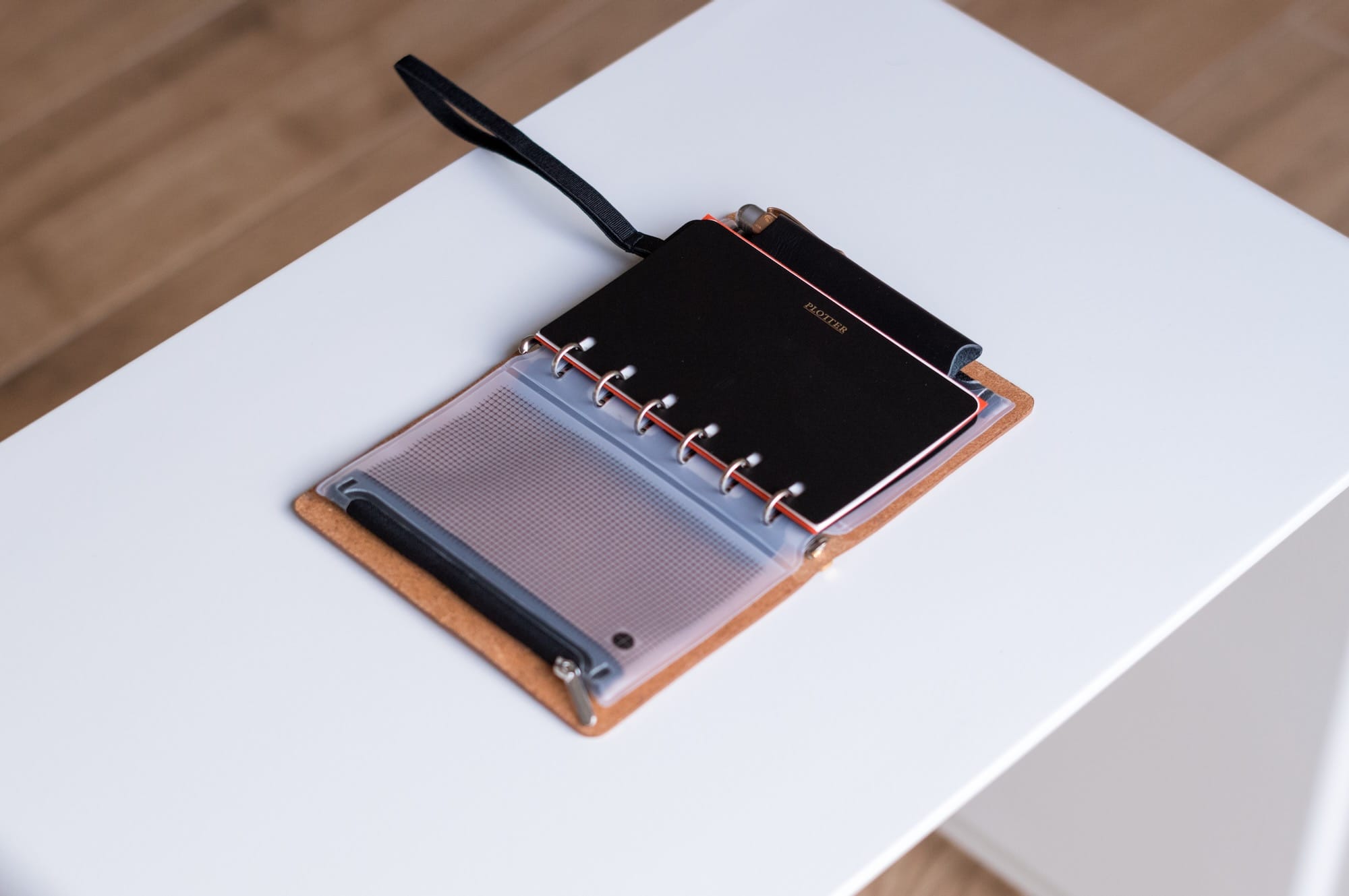
- The second section has the To-Do papers. I use two paper's one personal and another one for work. I don't use a Today, Next, or Someday list. If something needs to be done it's go here. If that todo is a big item (i.e: blog post, design project, vacation trip), I start using a new paper from the
NotesSection, and cross it from here. I use a dash-for new todo, convert them to a plus+for in-progress items, and finally put a circle if they are finished. This allows me to easily find all todo's I didn't started yet,todo's I've started and working on, and todo's I've finished.
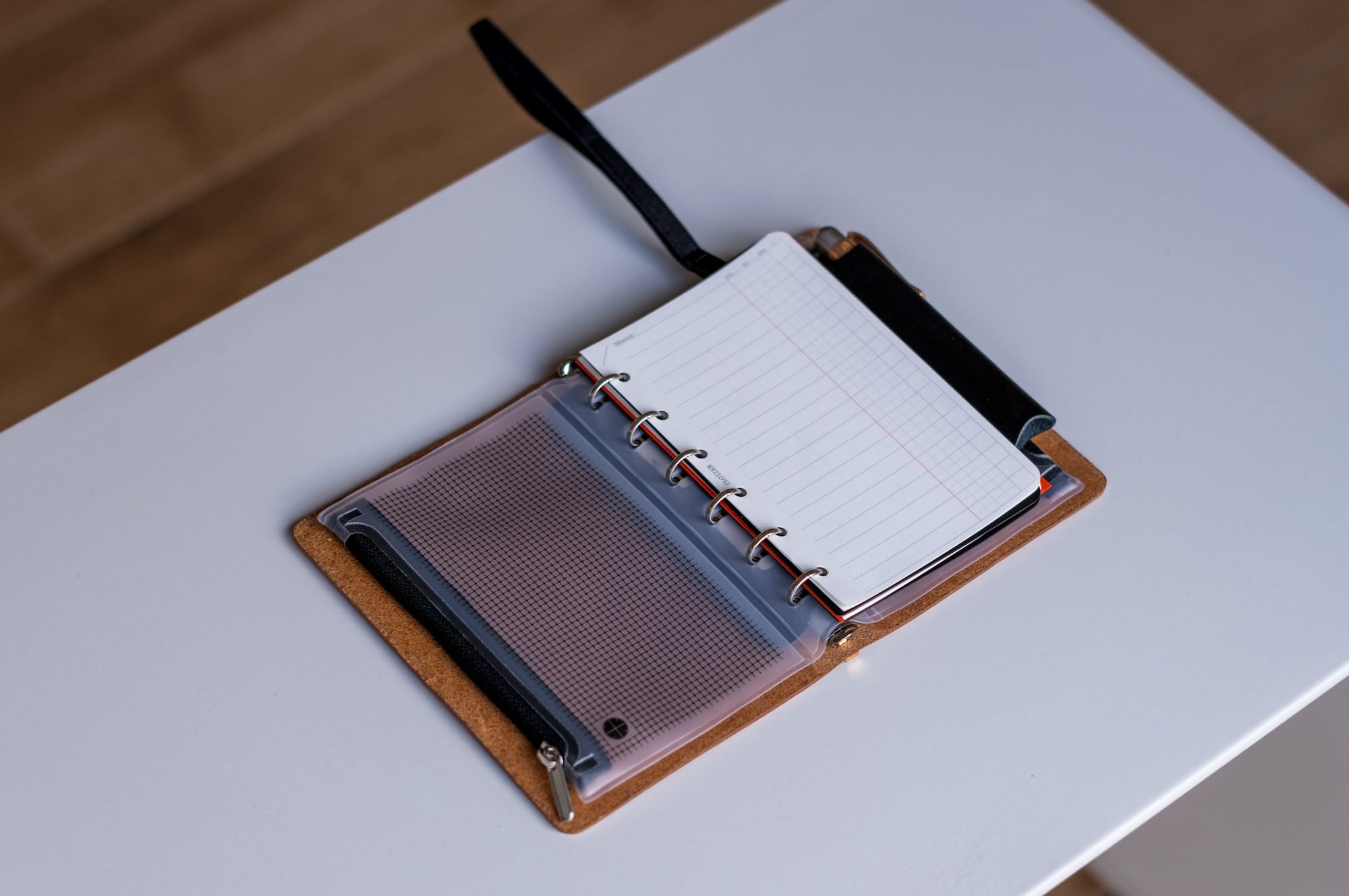
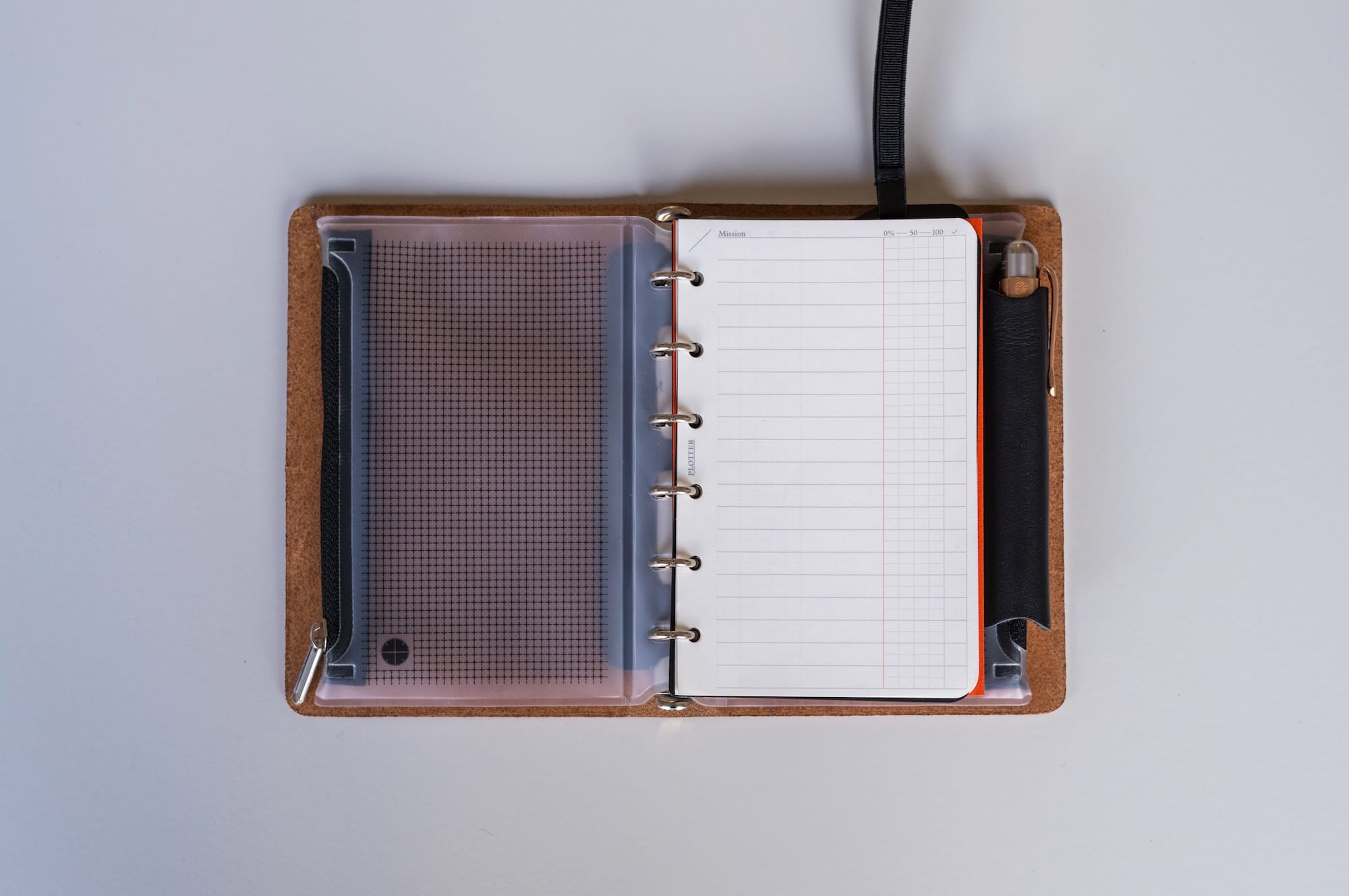
- The first section of the calendar includes weekly or monthly calendars. I’ve been using Google Calendar for scheduling my life for years, and my wife also has one, so we can easily see each other’s schedules. However, there are a few features with PLotter that really help me stay organized. For instance, it’s much easier to plan a vacation when you can simply flick through the months refills. If I have a specific task to do on a certain date, I can easily add it to the calendar. While this section is not my most used, I deliberately place it at the front so that I can become familiar with it.

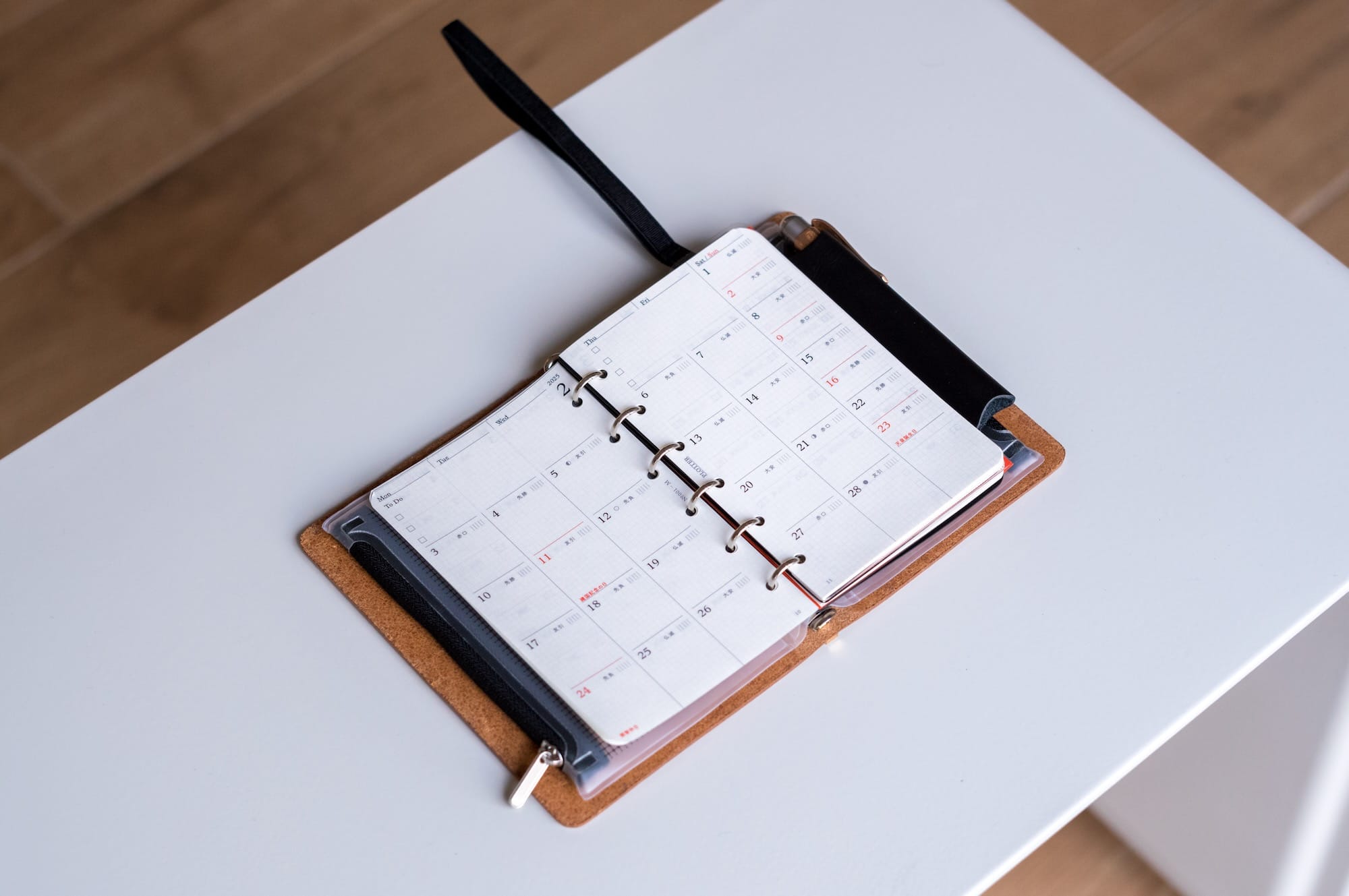
- I also add the ruler pad here. It has two use cases. The first one is as a divider. The ruler pad can be easily removed because the holes are created to be pulled and pushed. And it has a index allowing me to quickly jump to the today in my weekly if I need it.
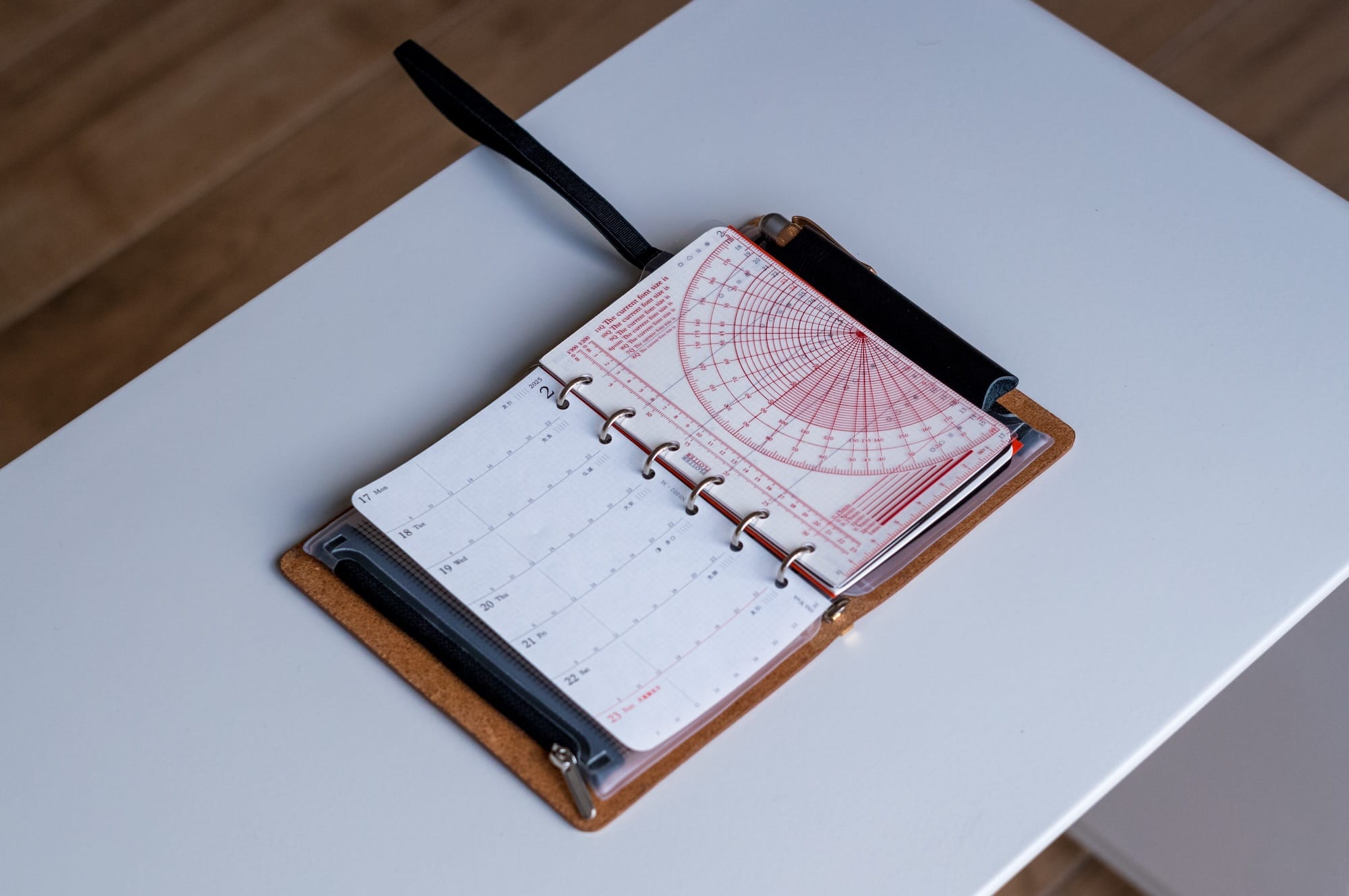
Finally we established our complete Plotter system:
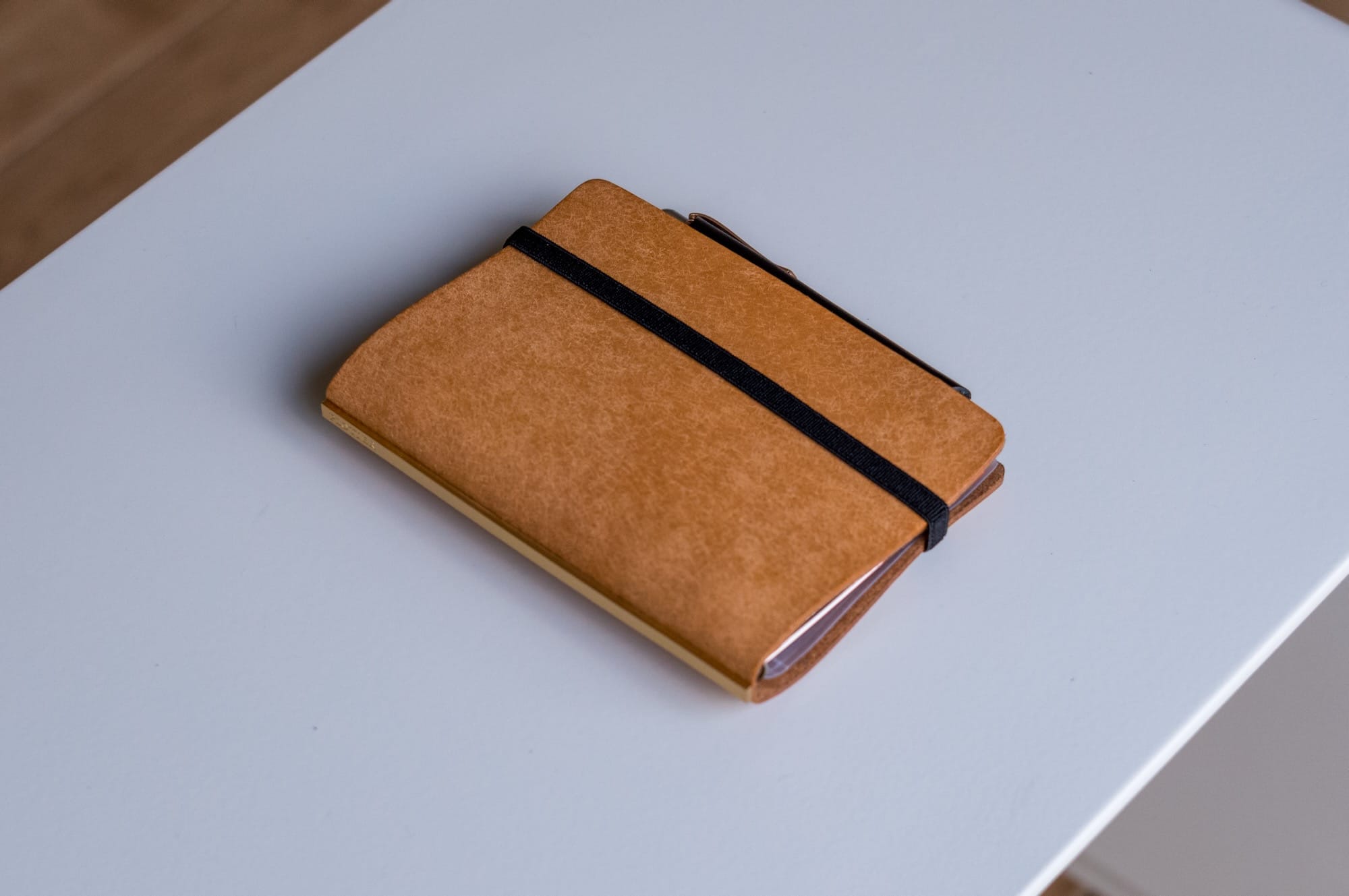
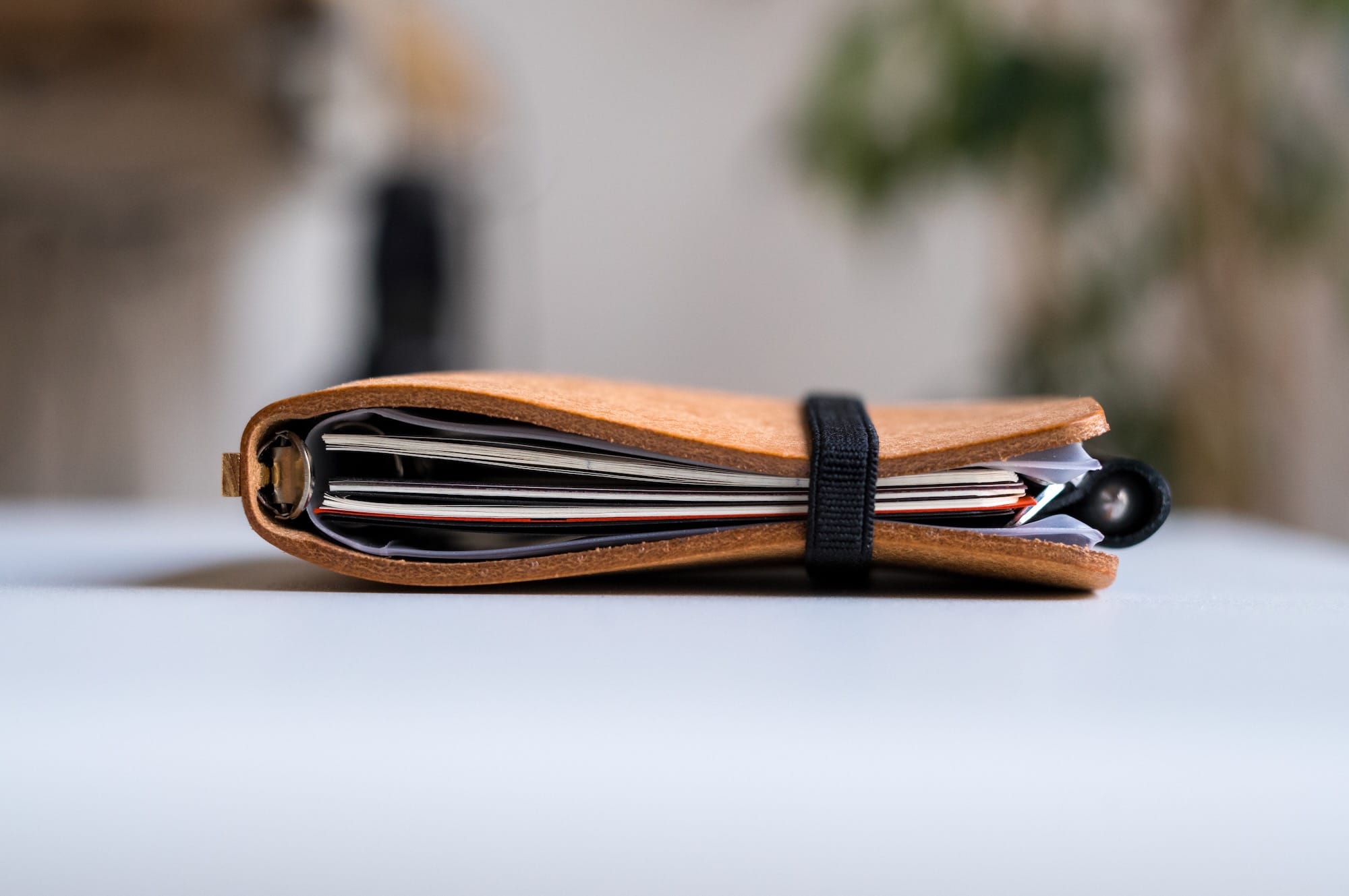
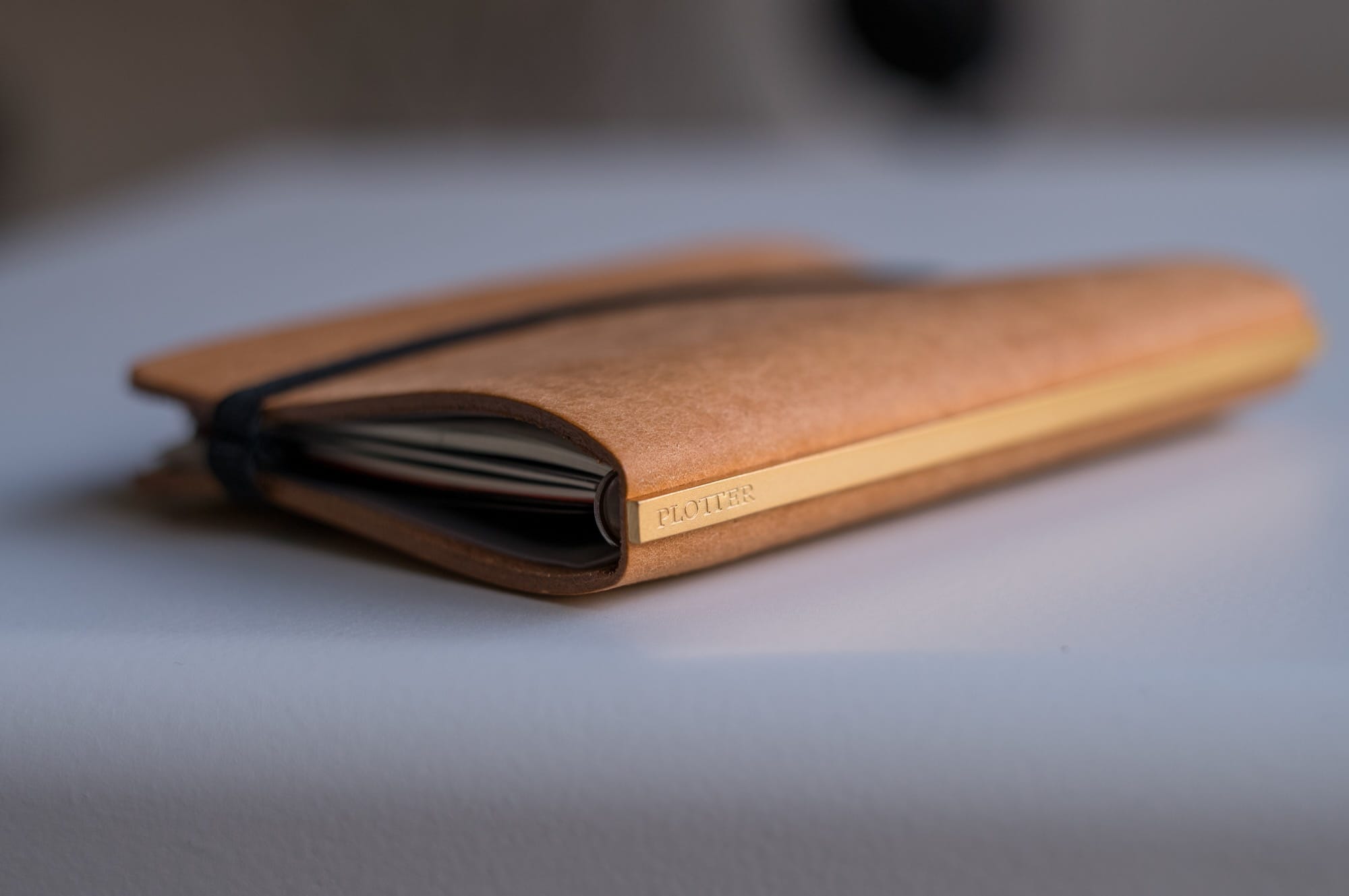
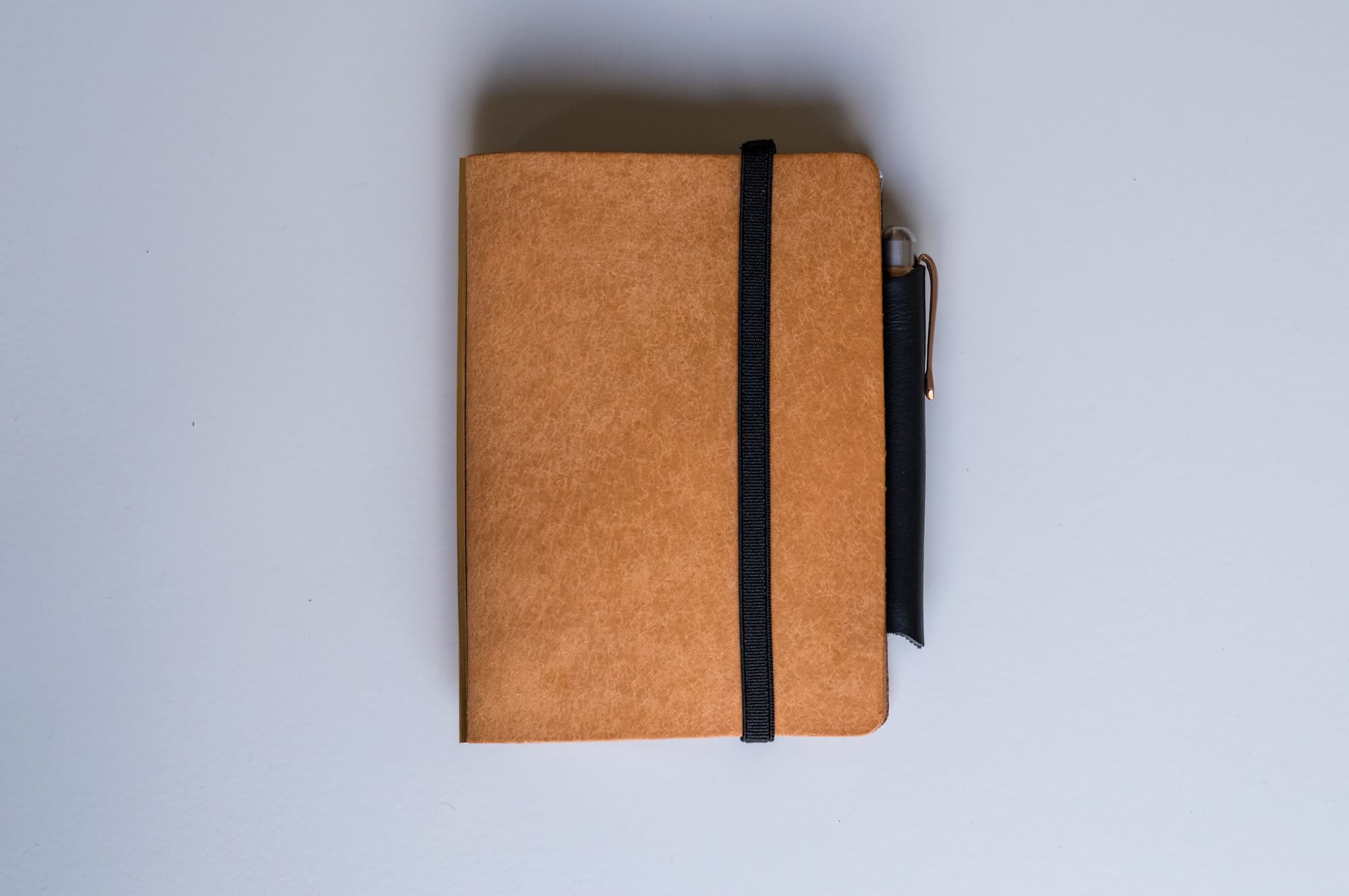
Plotter Mini with the Pueblo Beige Leather, paired with a Kaweco Liliput Fountain Pen
To recap, I have three sections with paper refills + project managers
- First section includes my
Calendarwith weekly refills - Second section includes my
ToDolists for both personal and work - Third section includes my
Notes, these are used to create either permanent notes OR for random sketches/scribbles. Please read my Zettelkasten blog post for more info onpermanent notes. - Finally I have project managers at the end. These also have paper refills, such as goals or a list of things, which are either transferred here from the
Notessection, or already here (such the list of books I've read so far).
Since I started writing this post, I changed a few things over and over again, but that's really why I love this system so much. For example here is a great video showcasing how someone uses the Mini 5 Plotter:
Unofficial refills
I have a few other non-Plotter refills that I've ordered from Amazon.co.jp and bought when I was traveling in Germany. Here you can see them for my Bible sized Plotter:
- I got a refills with customizable indexes. Currently, I use basic color codes, but it enables me to quickly switch between my weekly, to-do, and notes sections.
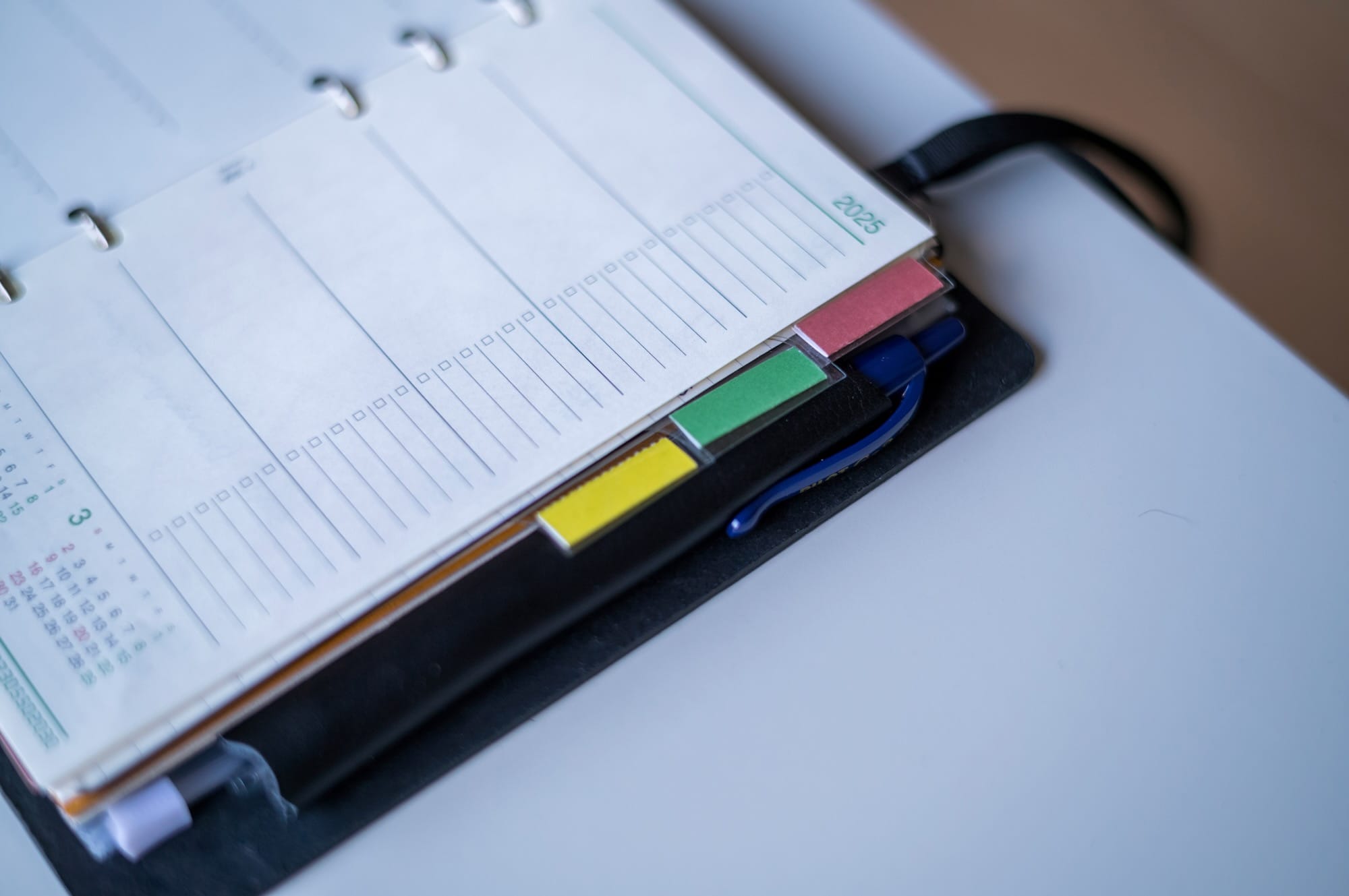
- The Fastener Case was to big for my use case and plan to use it when I travel. Hence I got a refill that allows me to use it only on one side. It also allows me to carry a brass ruler in 15cm width that comes very handy if I need it.
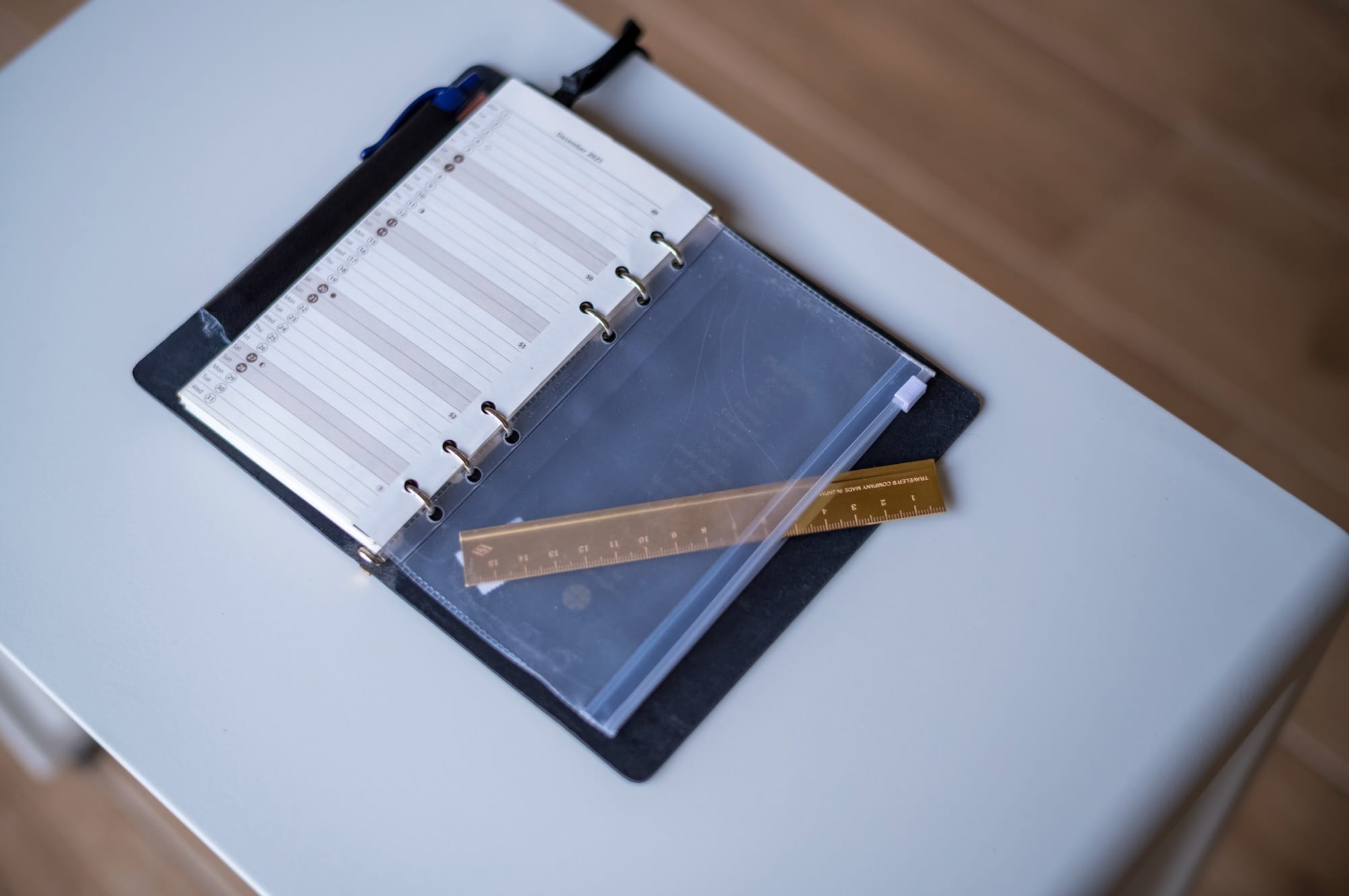
- I couldn't find the Weekly refill from Plotter itself, so I got something similar from Amazon.co.jp, Davinci branded.
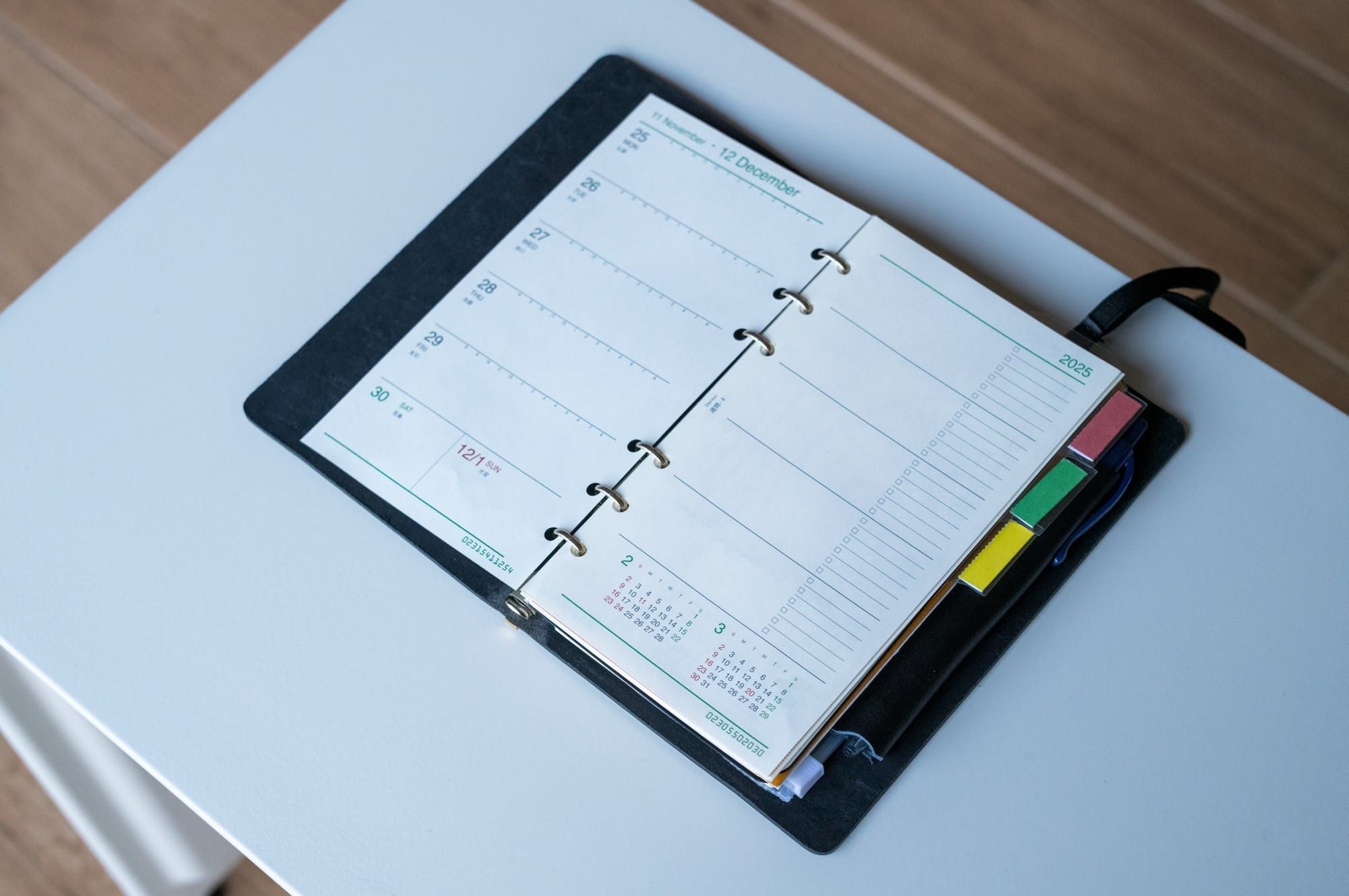
- I use a 12-month-long calendar (double-sided, printed) that I can quickly glance at to see all the important events happening in the next six months (and the other six months on the other side). I’ve included the official holidays in the United States and Turkey, as well as other relevant events like company PTO days and school events for my children.
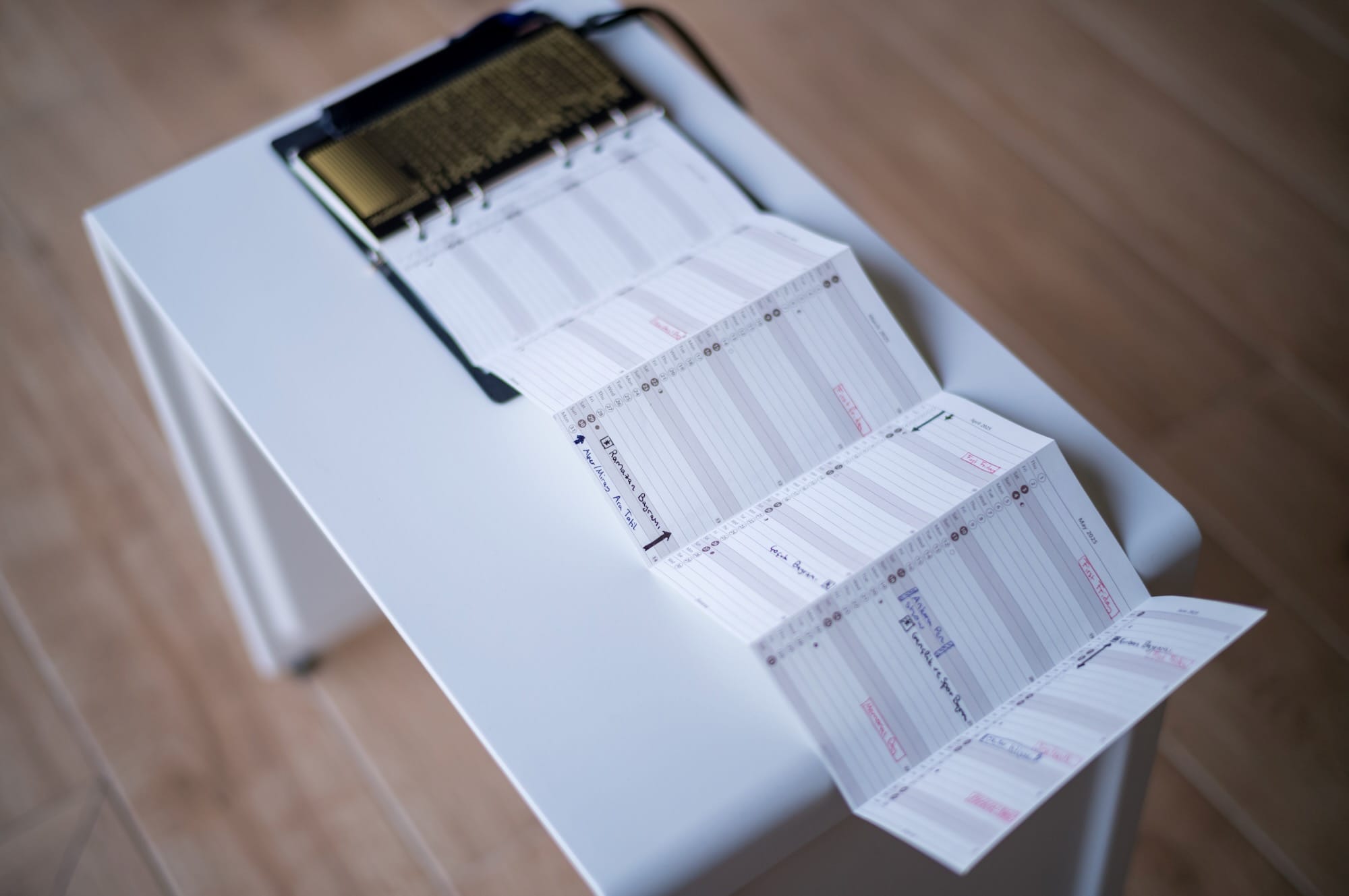
Pens I use with the Plotter System
Plotter’s paper is quite thin, but it performs exceptionally well with fountain pens. I’ve used my Lamy 2000 with a Montblanc Permanent Blue cartridge, as well as my Kaweco Liliput with a Lamy Short Blue cartridge.
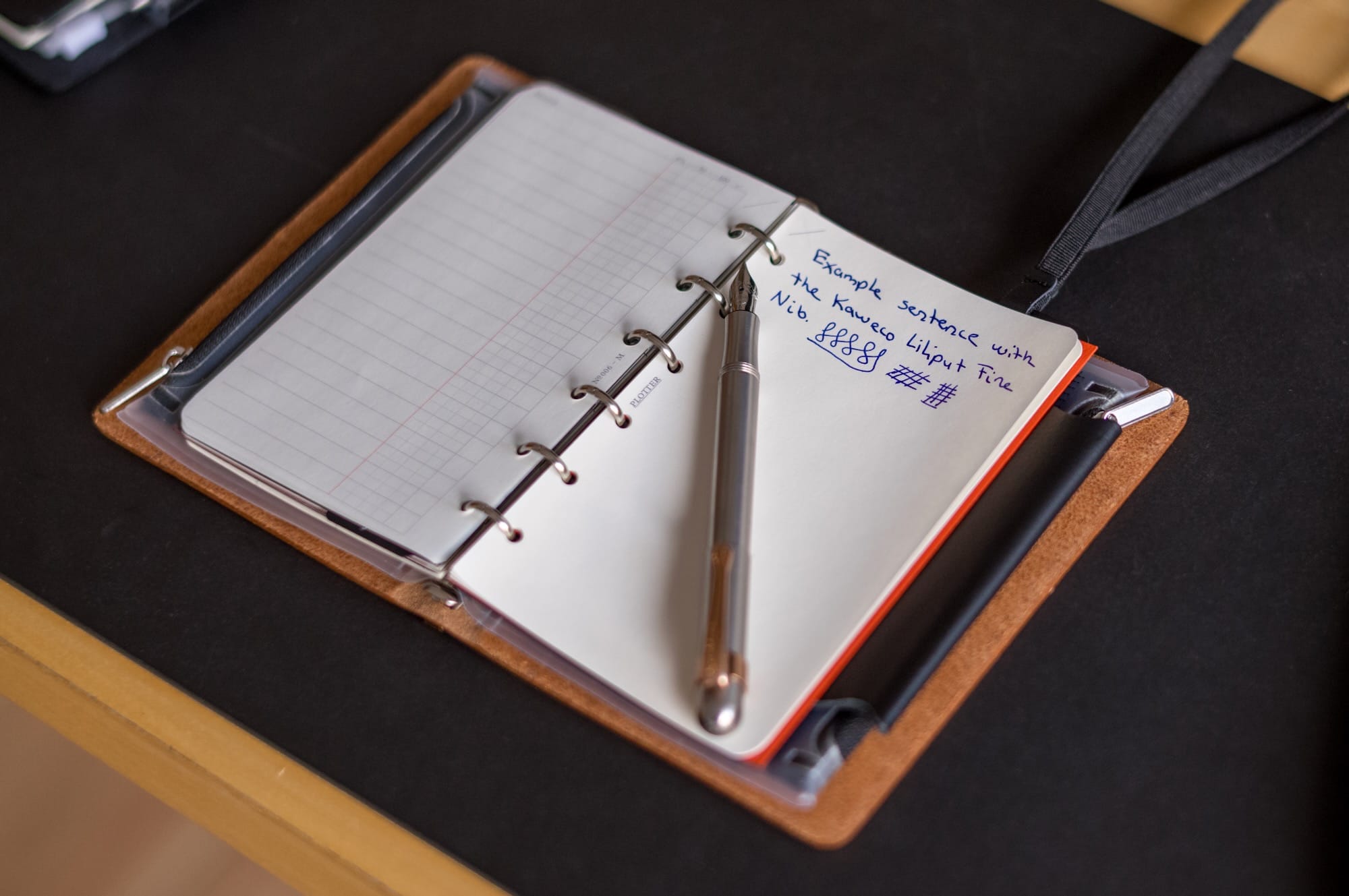
I’ve attached a Pilot G2 (0.7mm) to my Bible-sized notebook, and the Kaweco Liliput to my Mini binder. I believe the Pilot or similar gel pens are ideal for the plotter. They’re smooth and ready to use. However, when I have my Plotter notebooks at my desk, I always prefer my Lamy 2000. All these pens perform exceptionally well.
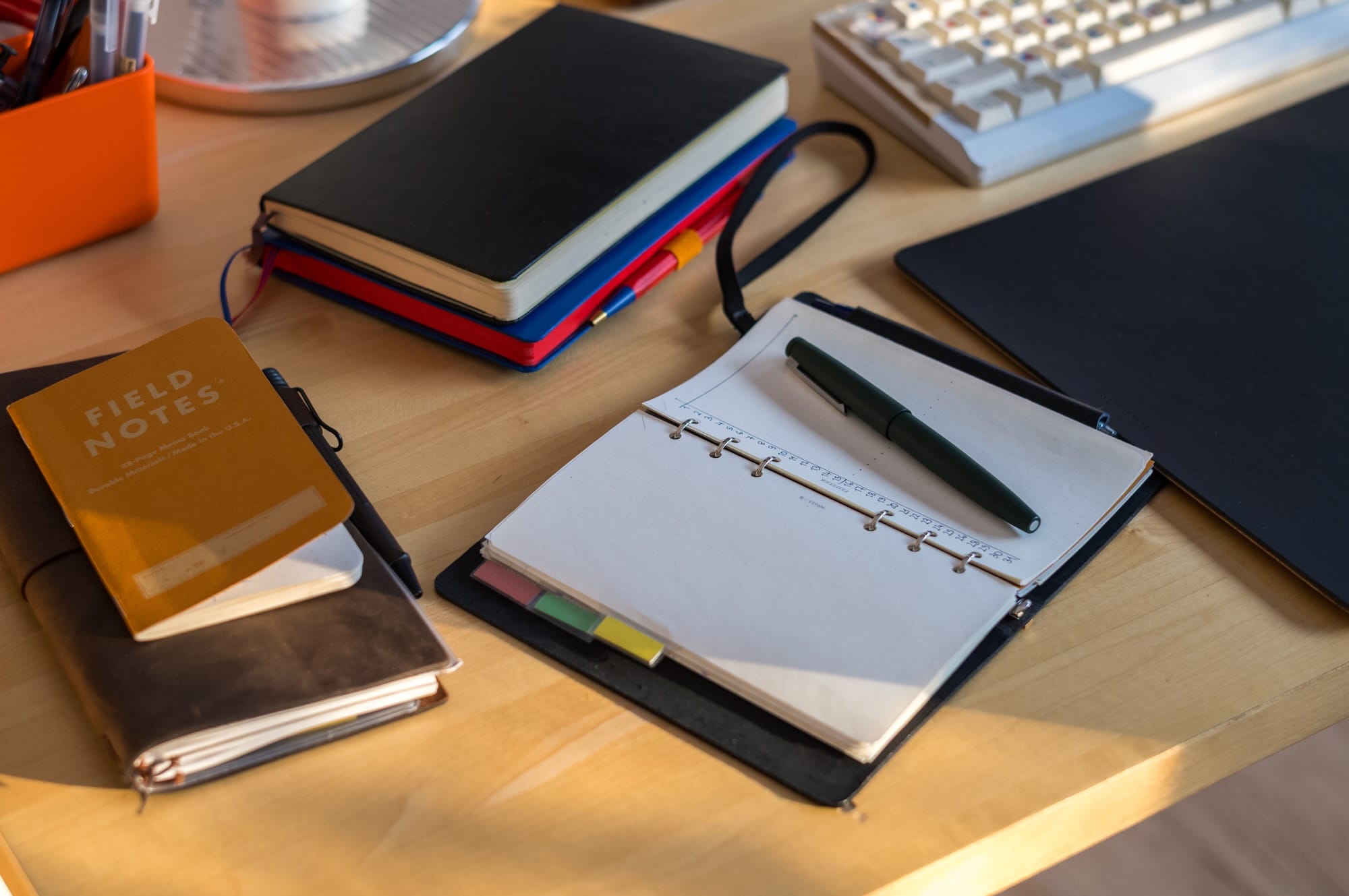
The fountain pens are slightly smoother and glide more effortlessly. If you’re concerned about scratchiness or resistance, there’s none. However, there are different refills available from various companies, so you can always find one that suits your preferences. On the other hand, I’m not a fan of rollerball pens, so I can’t comment on their performance.
Pros and Cons
How does it feel to use the Plotter? There are a few things that I love, and a few things that could be better. For one, the 11mm Ring system is really good if you like a minimalist and lean notebook. The design prevents the notebook to become bulky, however it also means that if you need more paper or more capacity you're limited. Whether this is an advantage or not is up to you.
The Bible-sized planner, is a delightful to carry. Its size is neither too big nor too small, and I believe it offers an ideal amount of space for various tasks. While I would require more space for journaling. Fortunately, Plotter provides an A5-sized binder, which is larger than the Bible-sized. So there is an option if I ever need one.
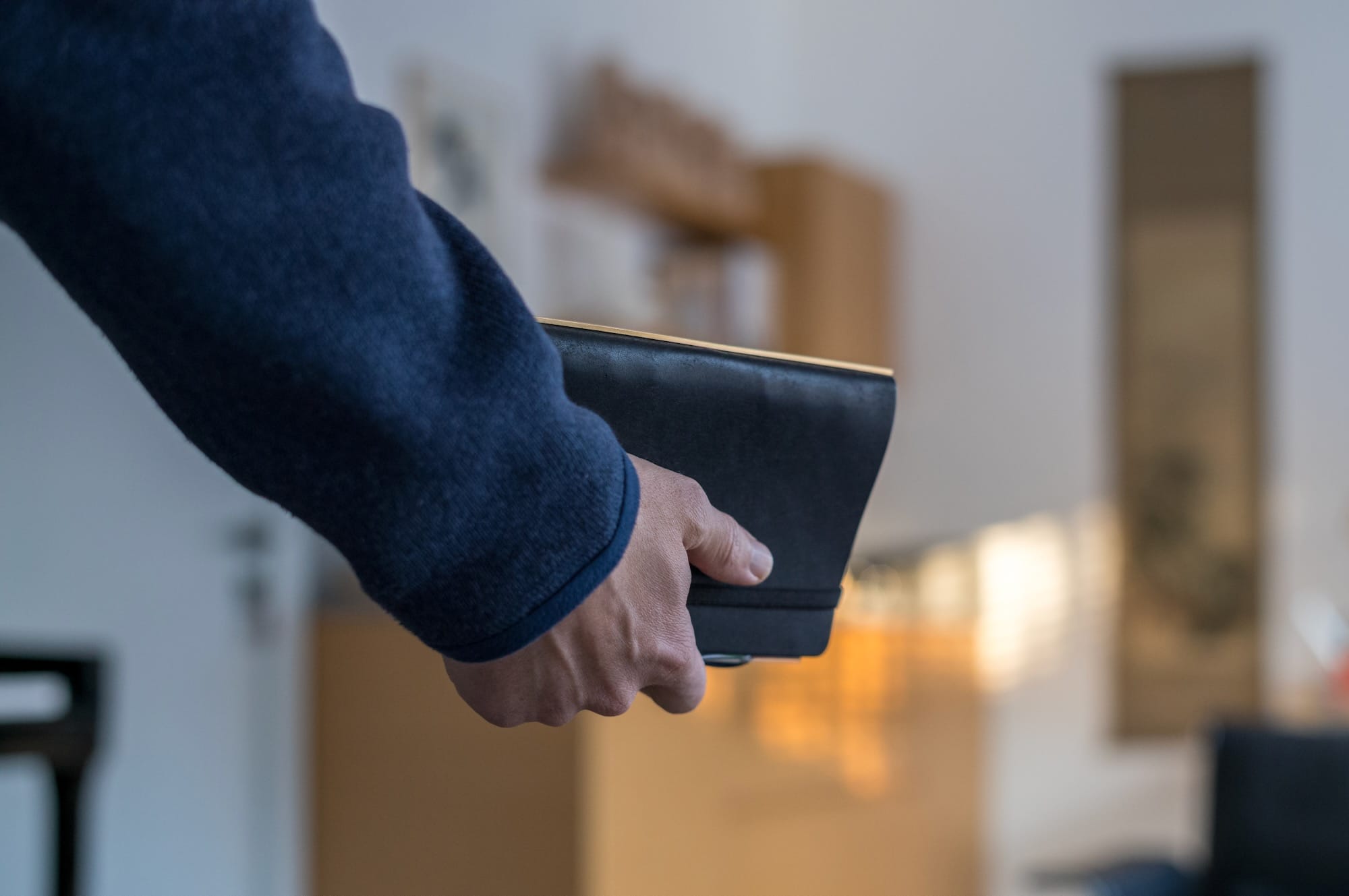
I love that I can arrange the refills according to my needs. Notebooks like Plotter are the ultimate modular notebook system in my opionon. Nothing comes close to it. There are other brands that embrace modularity, such as Traveler's notebook, Roterfaden, X47, etc ... However none of them can give the flexibility of a Ring notebook. The rings also allow us to attach custom refills. The sky is your limit.
Another small issue is that the paper won't stay fixed. Because they are attached to the rings, they wiggle a little bit. It didn't become a big issue, but it doesn't feel like a proper notebook because of that. Other than that, the rings never bothered me so far, in a very rare occasions did I felt that the ring was annoying I would take out them (i.e: when I was drawing lines with a ruler), but the advantages outperform the disadvantages.
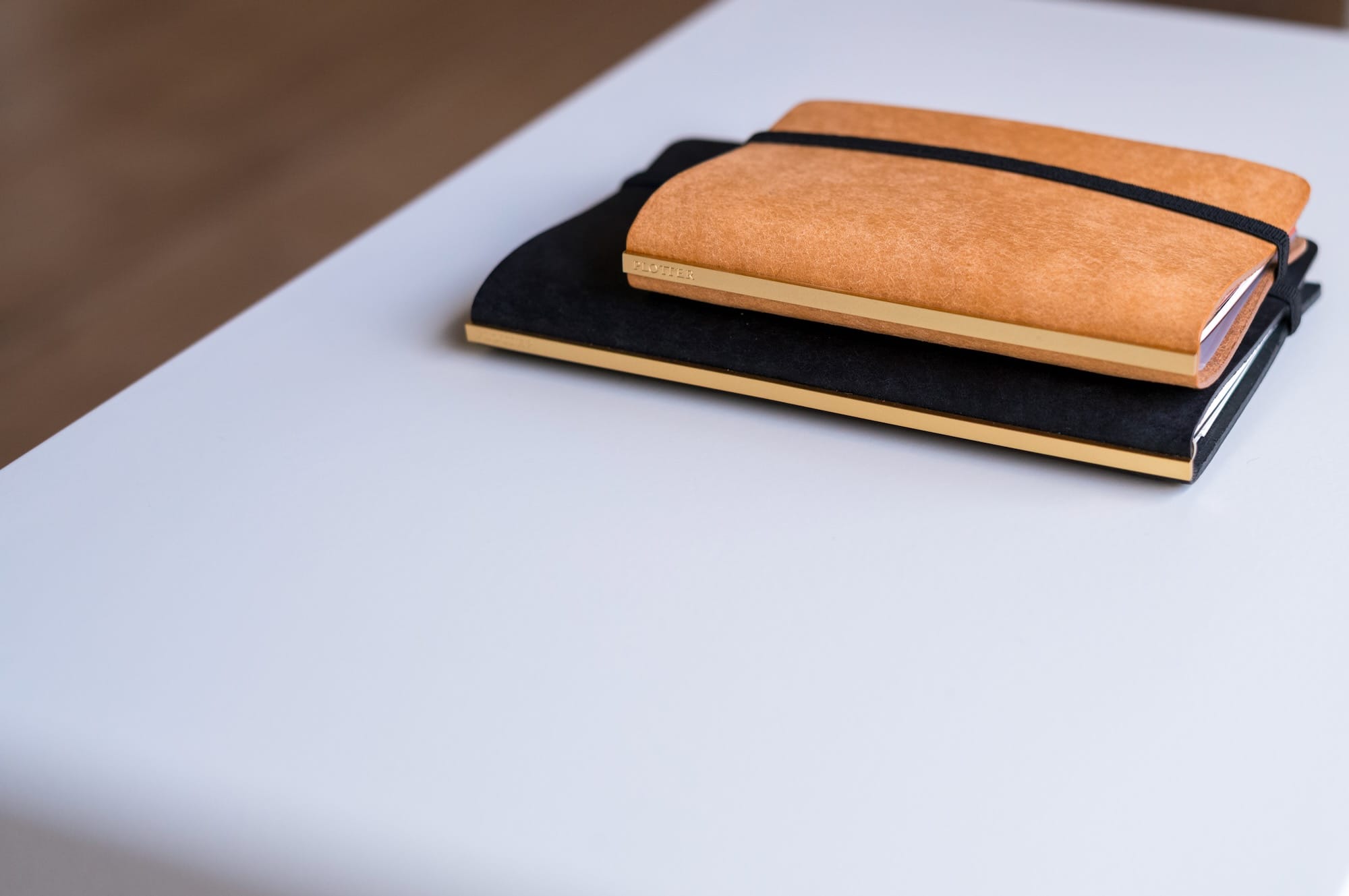
I think the leather binders for Plotter are a bit pricey for a notebook. And if you add up all the refills, it quickly becomes a lot. It makes it a bit of a luxury item, unfortunately. I wish they had a more affordable option, maybe with a different fabric? The same company that makes Plotter also has other brands like Knox and Traveler’s Notebook that are much cheaper. So, I think they put Plotter in a higher-end category for people who value quality over quantity. But for me, it’s totally worth it. The leather is a tad better than the Traveler’s Notebook case, which is already a very good leath. Again, whether it's worth or not, that's up to you.
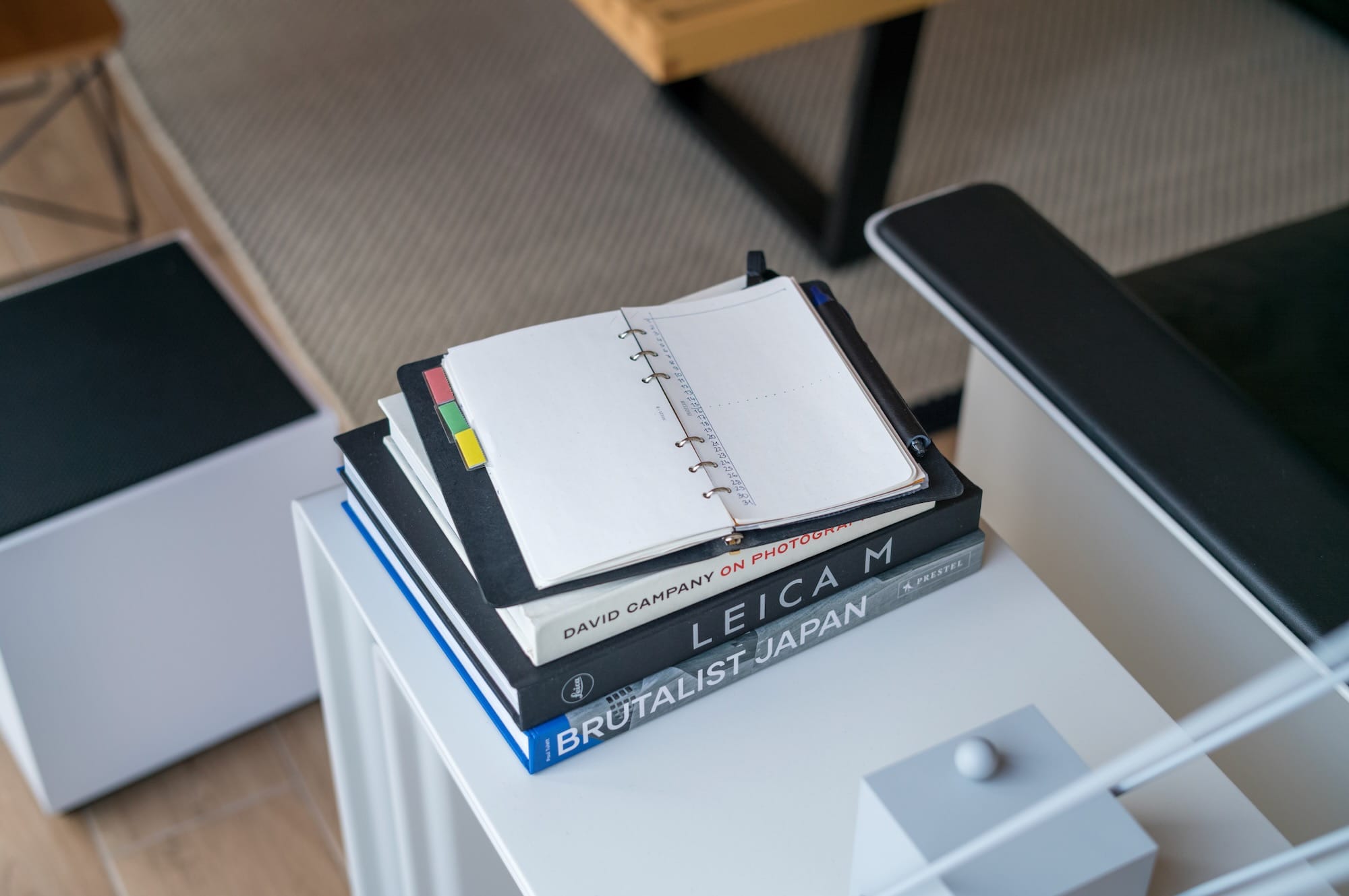
The paper refills are of high quality and very smooth. However some of the refills, such as the dot and grid are hard to use because the dots or lines are barely visible. I wish it had a better contrast. They are very thin, but the quality is there. This is the same company (DesignPhil) that also makes Midori papers, so they know one or two things about papers for sure.
The backplate is shiny and looks great when placed on a desk. However, it has sharp edges that require caution when placing it in a bag (or even on a desk). I’ve noticed some people on Reddit using sandpaper to smooth the edges. I might do the same.
How to order
If you reside in the United States or Japan, your options are quite convenient. You can conveniently order Plotter directly from Plotter U.S.A. Alternatively, you can purchase Plotter from various stationers in Japan, including their online store. However, things become more challenging if you’re not located in either of these countries (like me). I went over the distributor list and identified the stationeries that carry Plotter. The complete list is available here: https://plotterusa.com/shop-list/
I visited every single stationery website, even emailed some of them, and discovered that only a few would ship items overseas. Yoseka Stationery, based in New York, was one of them. So, I ordered everything related to my Bible-sized plotter from there to a friend in Germany. I paid extra shipping and customs duty. Fortunately, at the same time a friend’s friend in the U.S. was willing to also bring a few Plotter-related items. Therefore, I ordered a set of Mini Binder + refills from Dromgoole’s, based in Texas. Eventually, I got them delivered to Turkey (which is a whole other story).
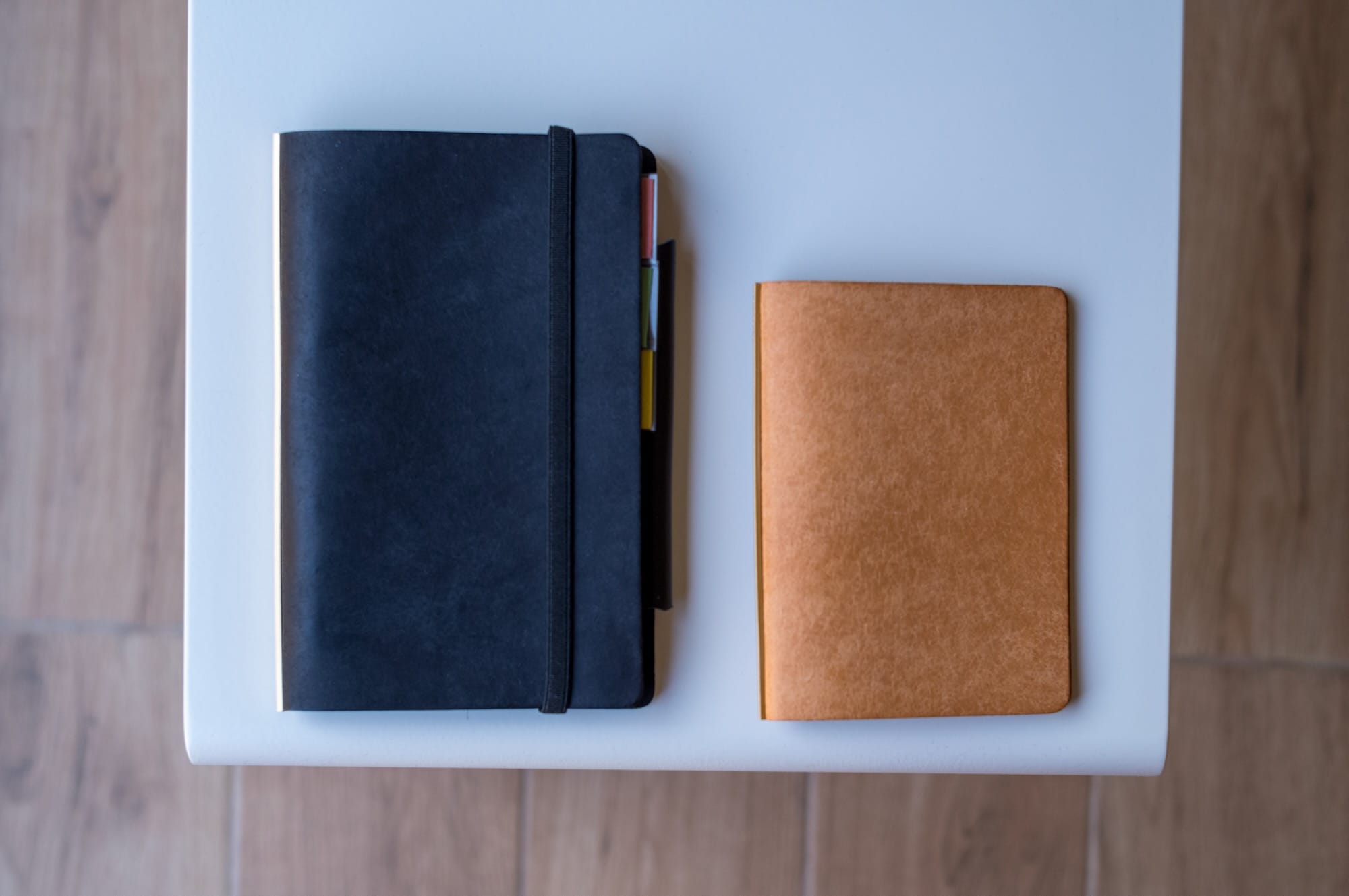
I later discovered that I’m able to buy refills from Amazon.co.jp and ship them to Turkey directly. It’s not very efficient due to the 30 euro limit (everything greater than that requires me to go through an elaborate tax process involving lots of papers). But it’s there if needed.
Lastly, there are a few Japanese merchants on eBay that sell Plotter refill and binders. They also ship to Europe or any other country if you're interested.
Verdict
Plotter really helped me organizing my life and writing down lots of things in a convenient way. The modular system made it easy for me to try out different use cases and eventually adapt something that I really like. The leather is beautiful and feels good in the hands, the design language and refills have been thought carefully. You can see that a lot of care and thinking has gone into developing it. There is a huge community over at YouTube and Reddit sharing tips and tricks, and I've learnt a few things from them.
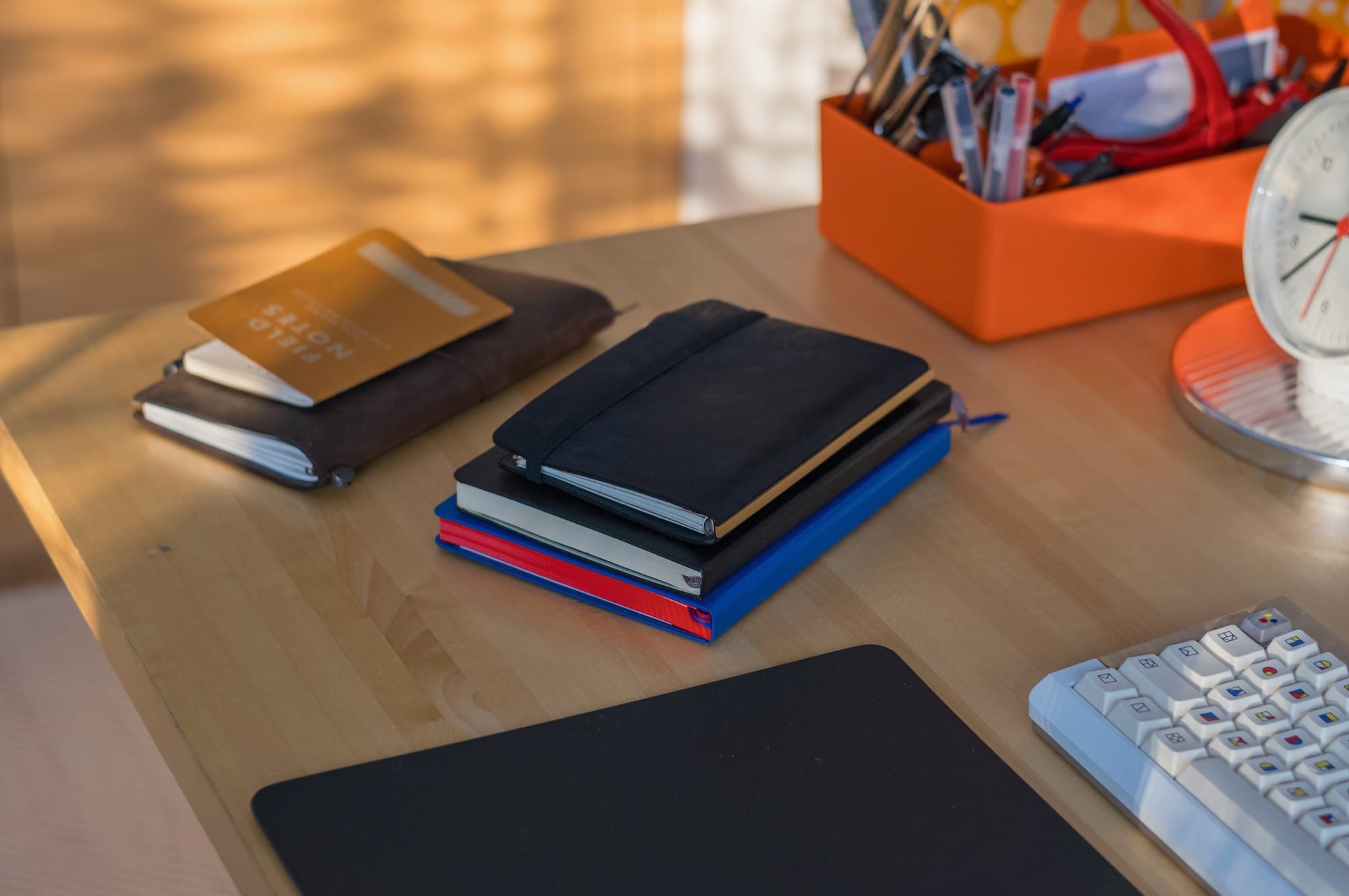
Plotter made my life easier by providing a convenient and organized way to jot down various ideas. The modular design system allowed me to experiment with different use cases and eventually I found a system that truly resonated with me. The leather material is beautiful, and the feel in the hands delightful. The design language and refill options are thoughtfully crafted. It shows the attention to detail and thoughtfulness that went into developing this product. The Plotter community on YouTube and Reddit is incredibly active, sharing valuable tips and tricks, and I've learnt from them a few things.
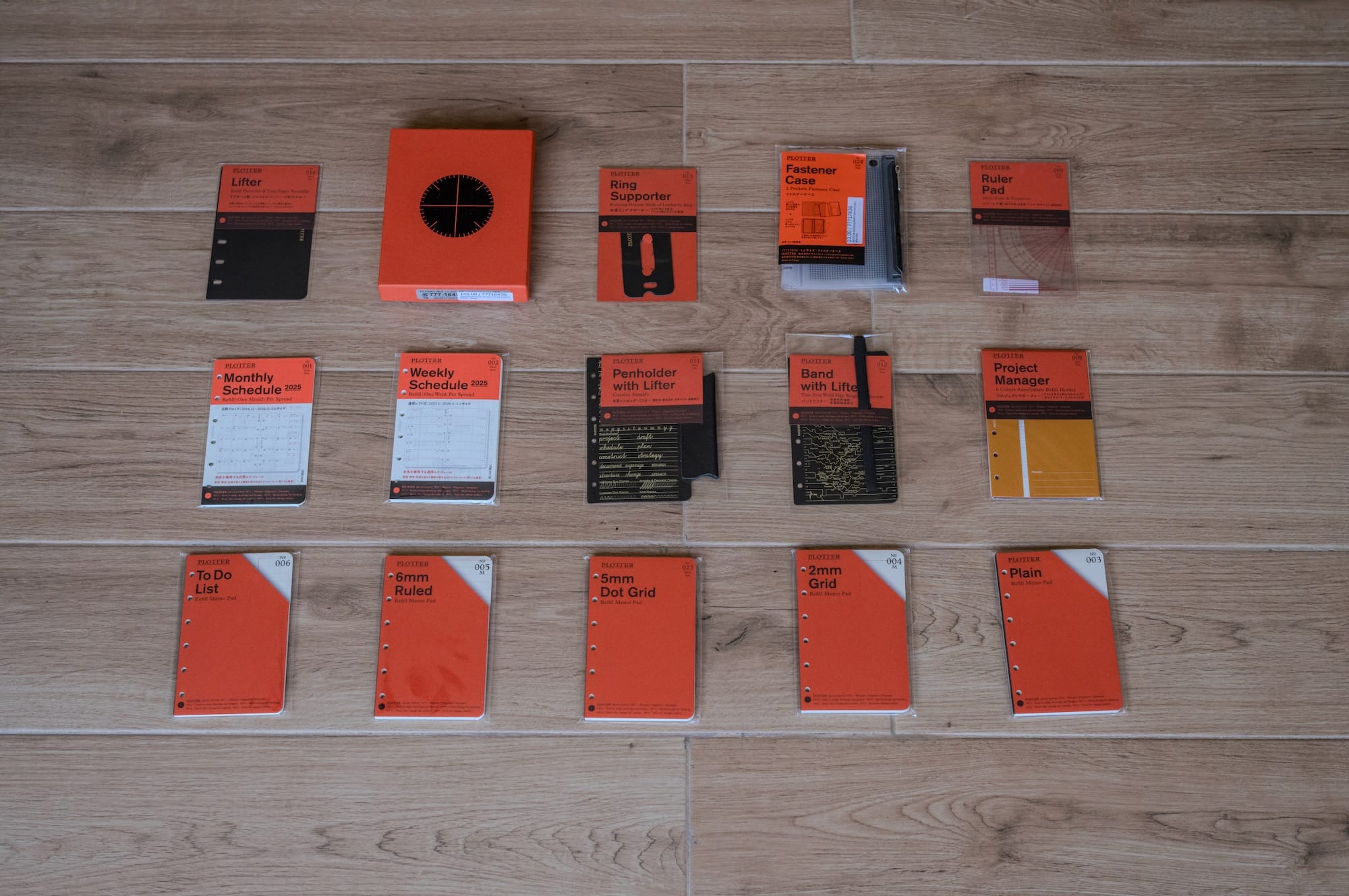
I plan to stick using the Plotter for the foreseeable future. I’m considering getting an A5-sized Plotter for journaling and planning, or a Mini-5 for carrying a pocket-sized Plotter with me. However, I haven’t made a final decision yet. For now, I don’t use the Plotter for journaling; instead, I use my Molesking or Leuchtturm notebooks. However, I might also use the Plotter if it makes sense for my needs. (I also have a Traveler’s Notebook system with a few refills, so I’m planning to give it a try for journaling. I have a feeling it might be better suited for long-term writing compared to the Plotter, but we’ll see.)
Thanks for reading if you’ve reached this point. Please don’t hesitate to reach out if you have any questions. You can email me at the address provided in the about page or send me a direct message on Instagram using my handle, which is also listed in the about page.